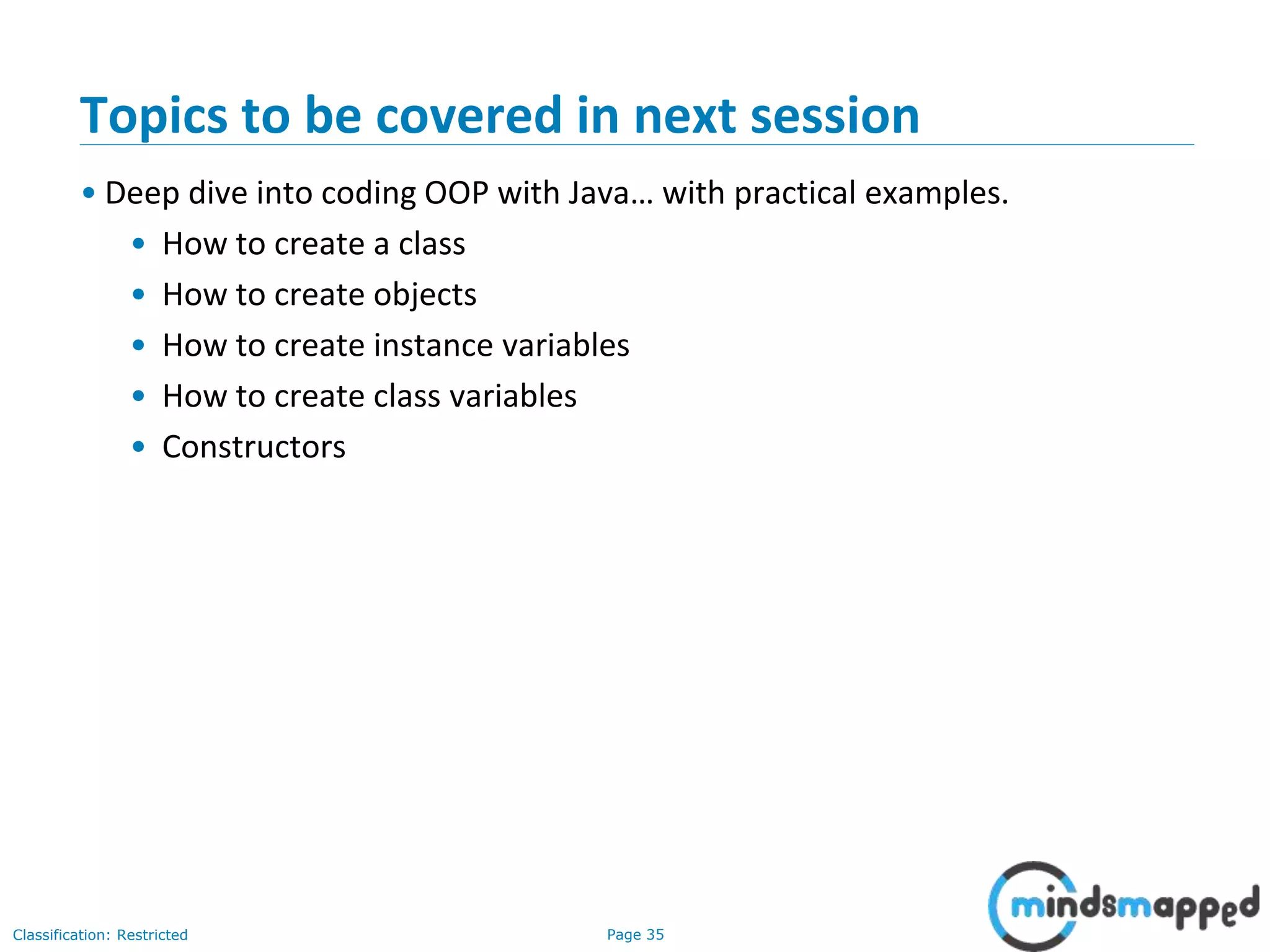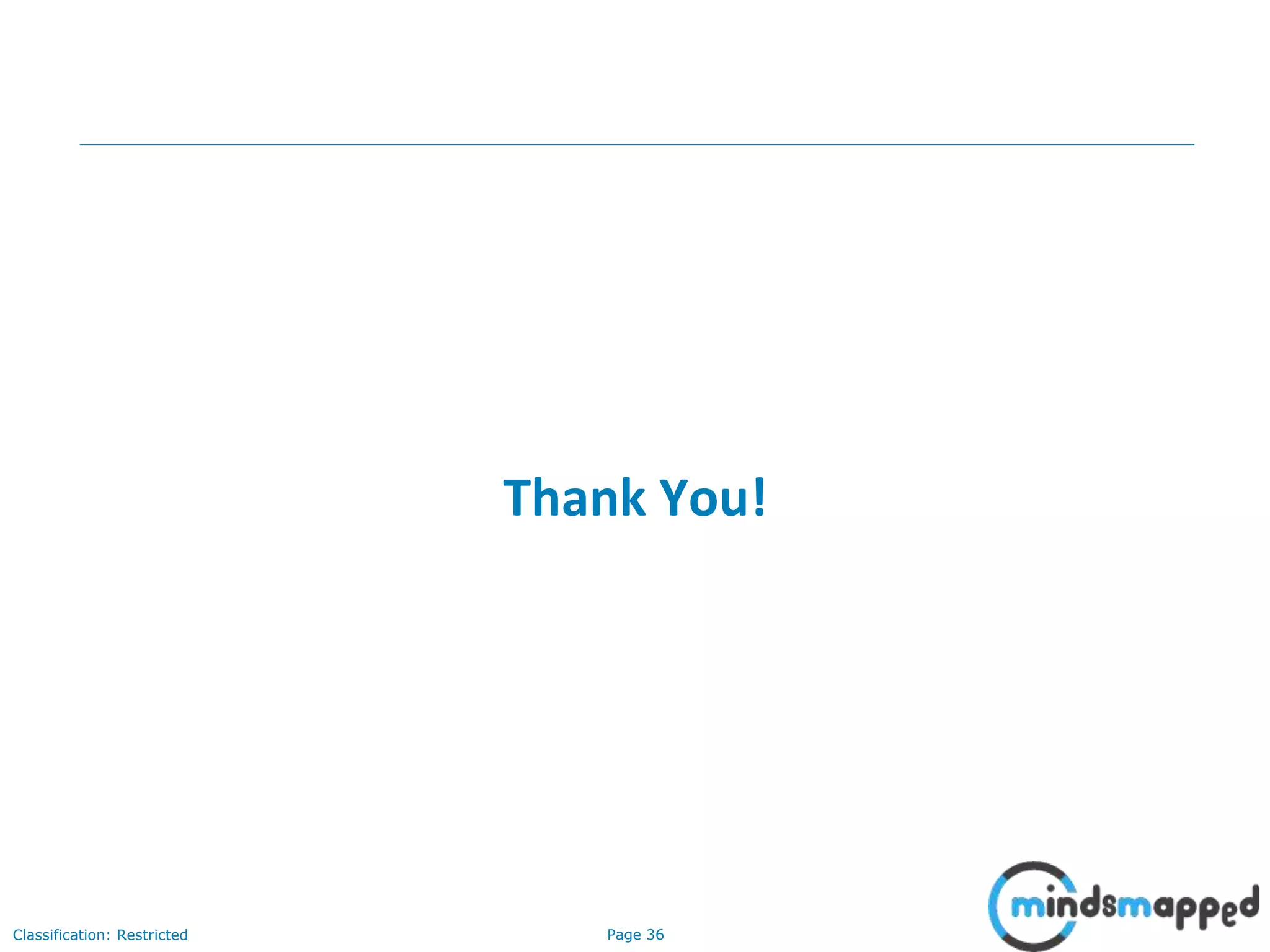The document discusses object-oriented programming (OOP) principles, explaining key concepts such as classes, objects, inheritance, polymorphism, abstraction, and encapsulation. It emphasizes the advantages of OOP, including code reusability, flexibility, and realistic modeling of complex systems. Additionally, it outlines the differences between analysis and design in object-oriented analysis and design (OOAD) and introduces Java naming conventions for classes and methods.
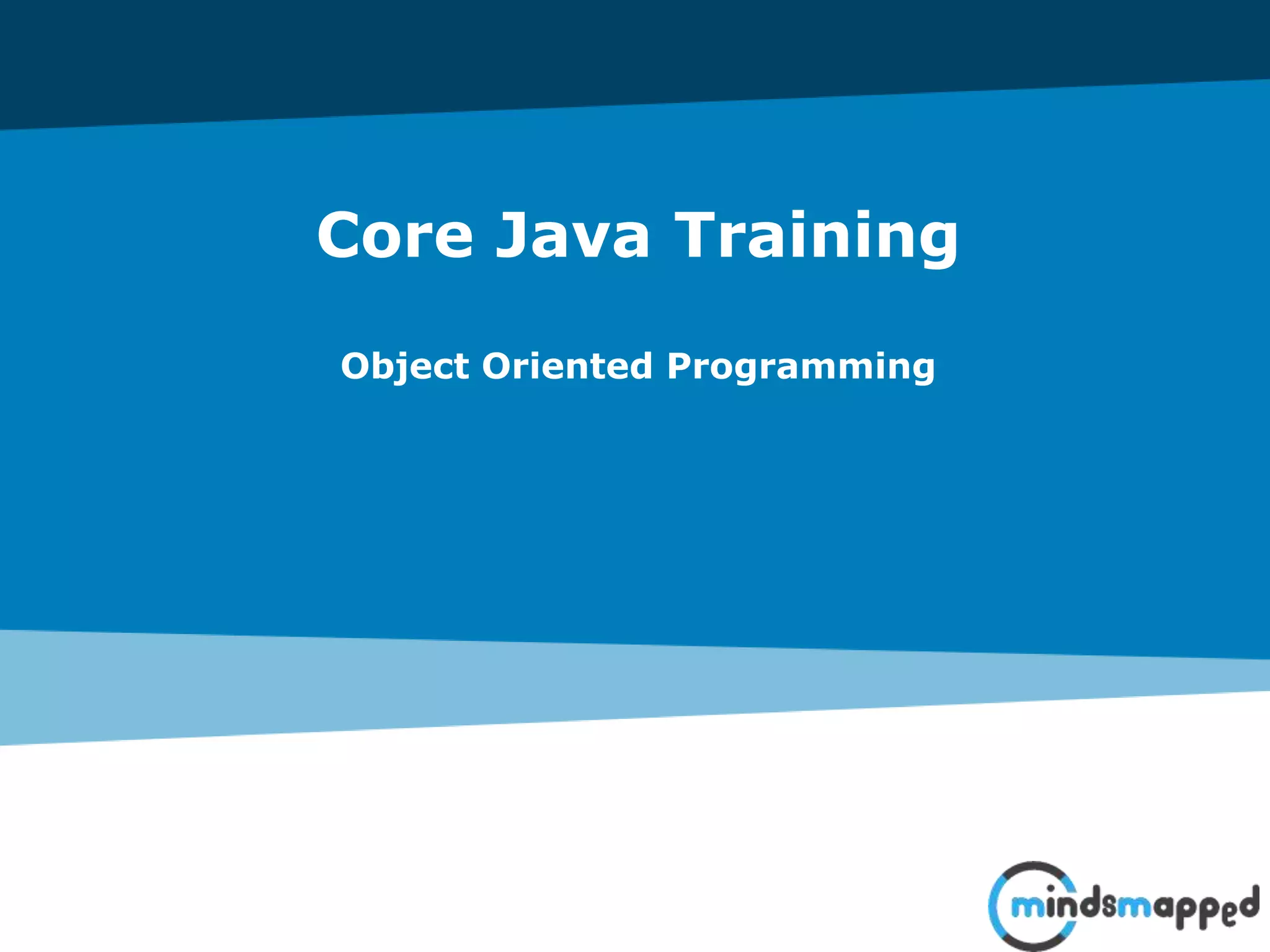
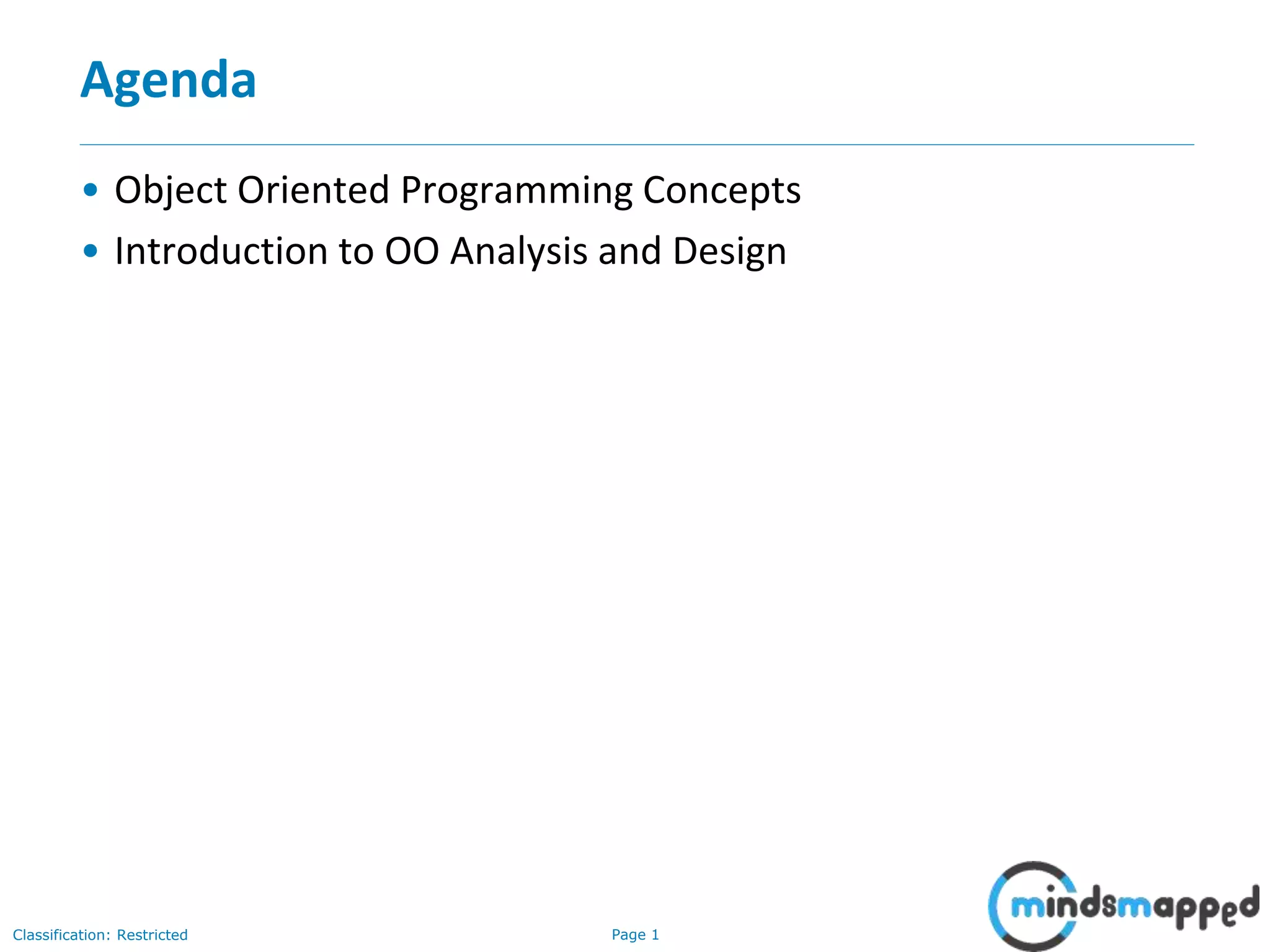
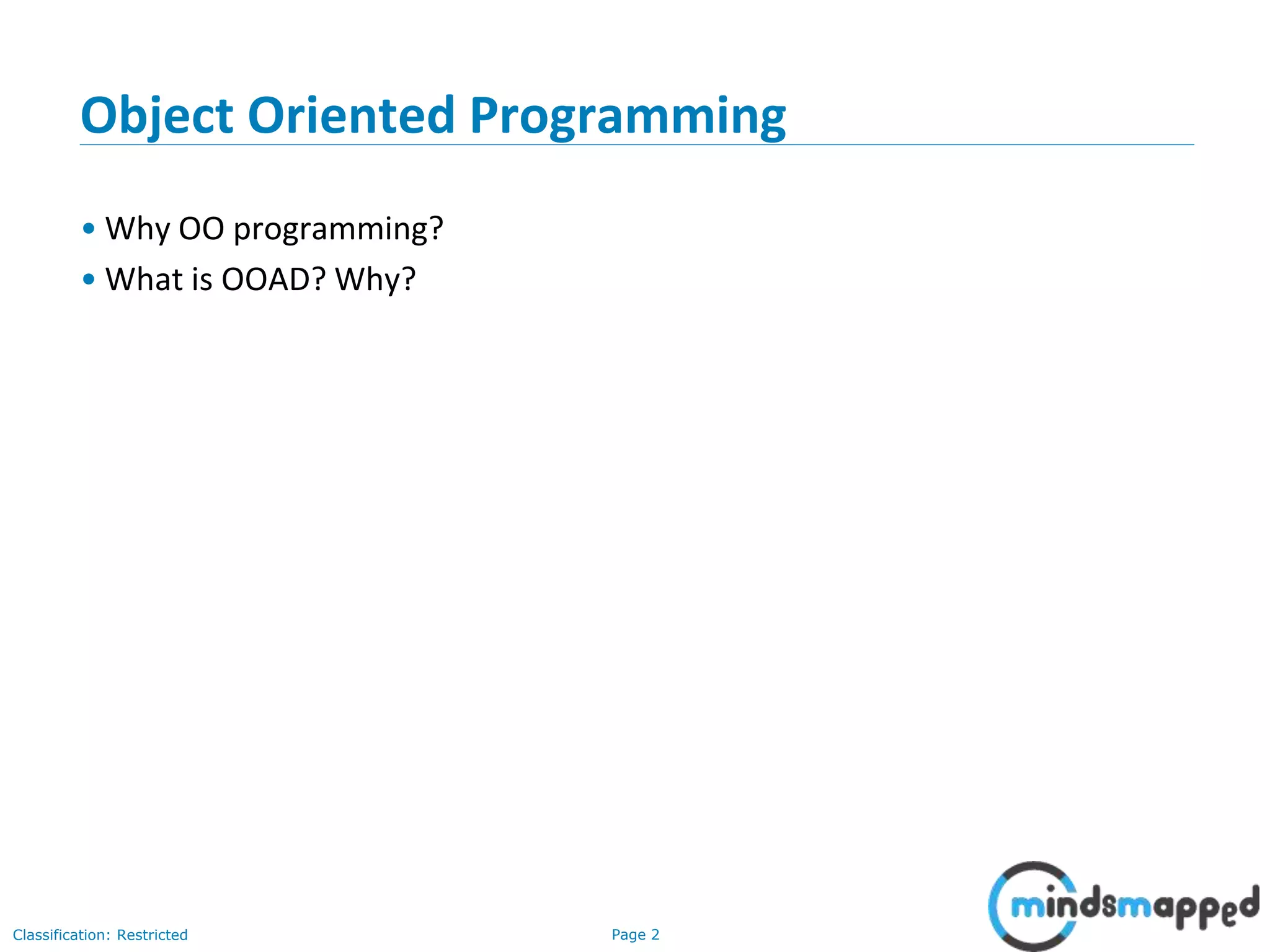
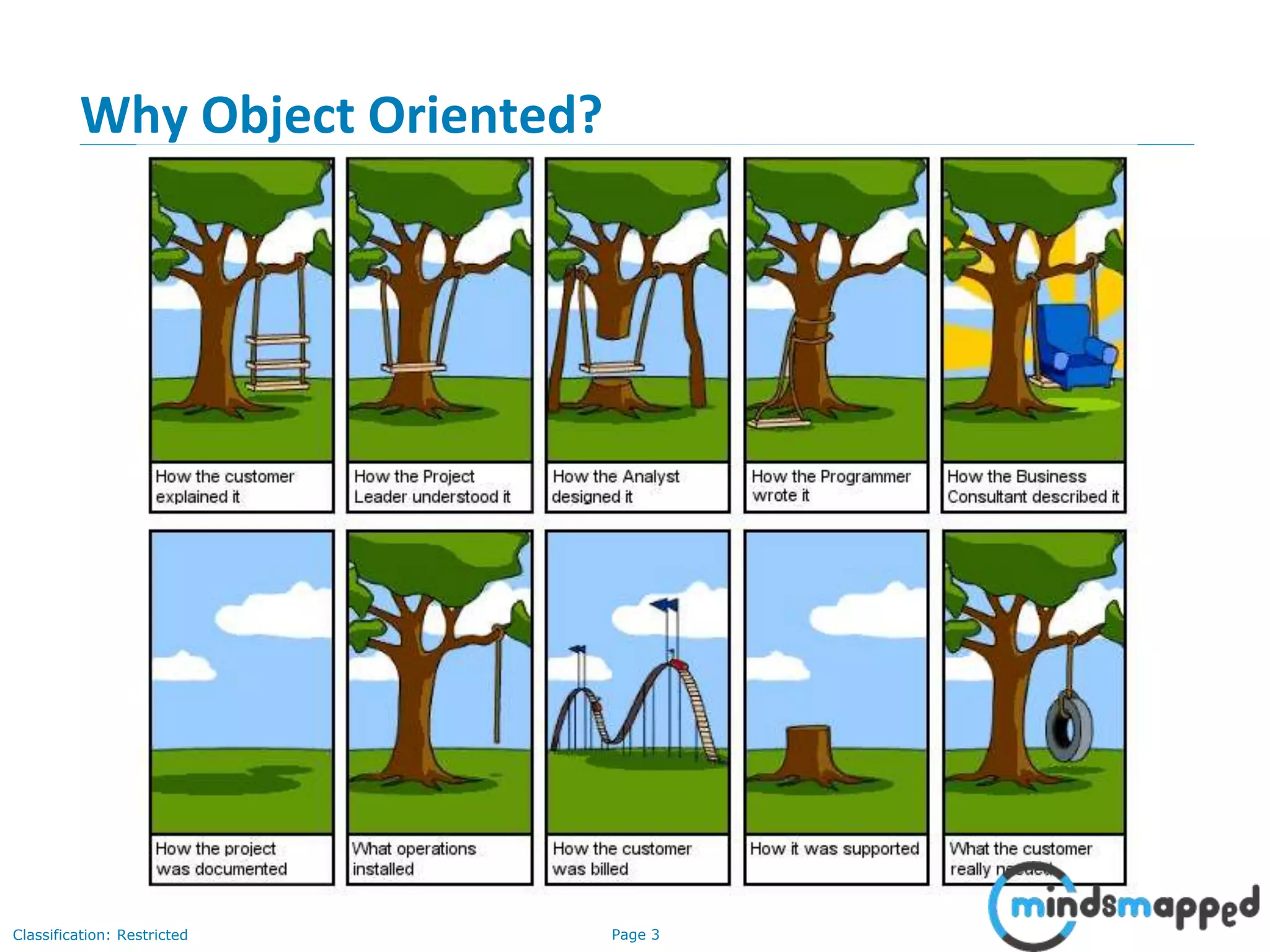
![Page 4Classification: Restricted 4 What kind of language can alleviate difficulties with communication & complexity hopefully well? Why Object-Oriented? “The "software crises" came about when people realized the major problems in software development were … caused by communication difficulties and the management of complexity” [Budd] The Whorfian Hypothesis: Human beings … are very much at the mercy of the particular language which has become the medium of expression for their society … the 'real world' is … built upon the language habits … ](https://image.slidesharecdn.com/session07-introtoobjectorientedprogrammingwithjava-slides-180817165427/75/Intro-to-Object-Oriented-Programming-with-Java-5-2048.jpg)
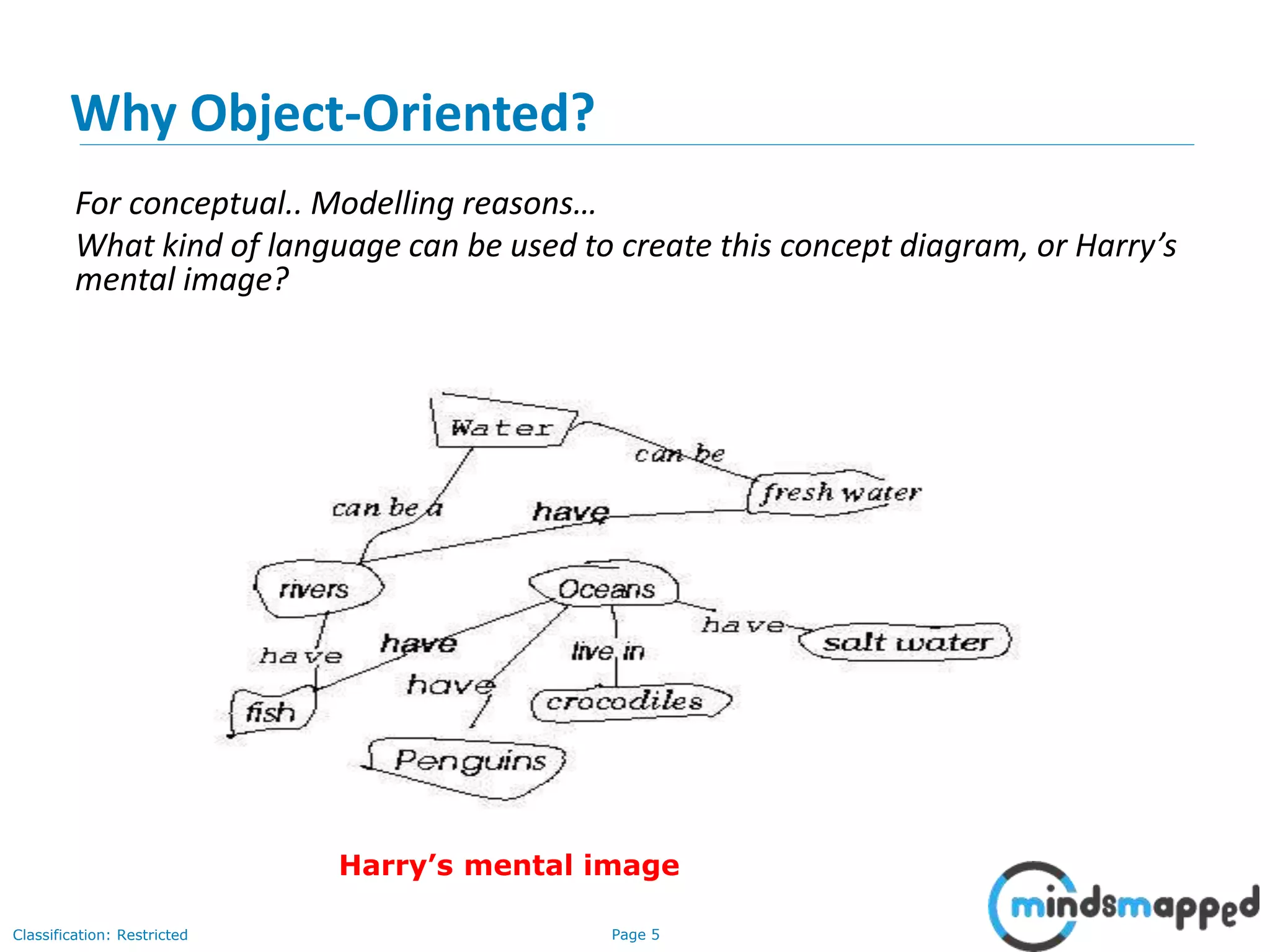
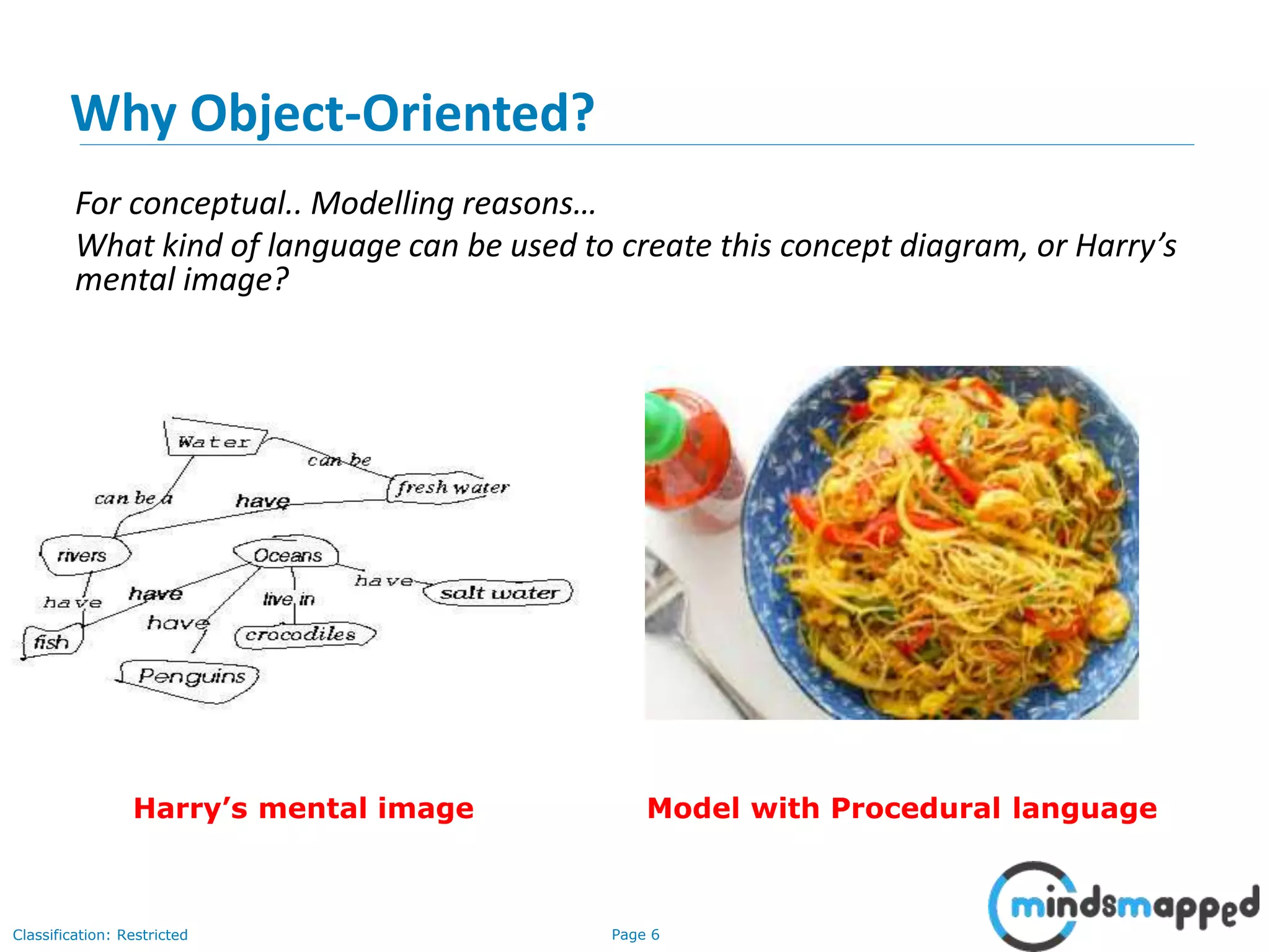
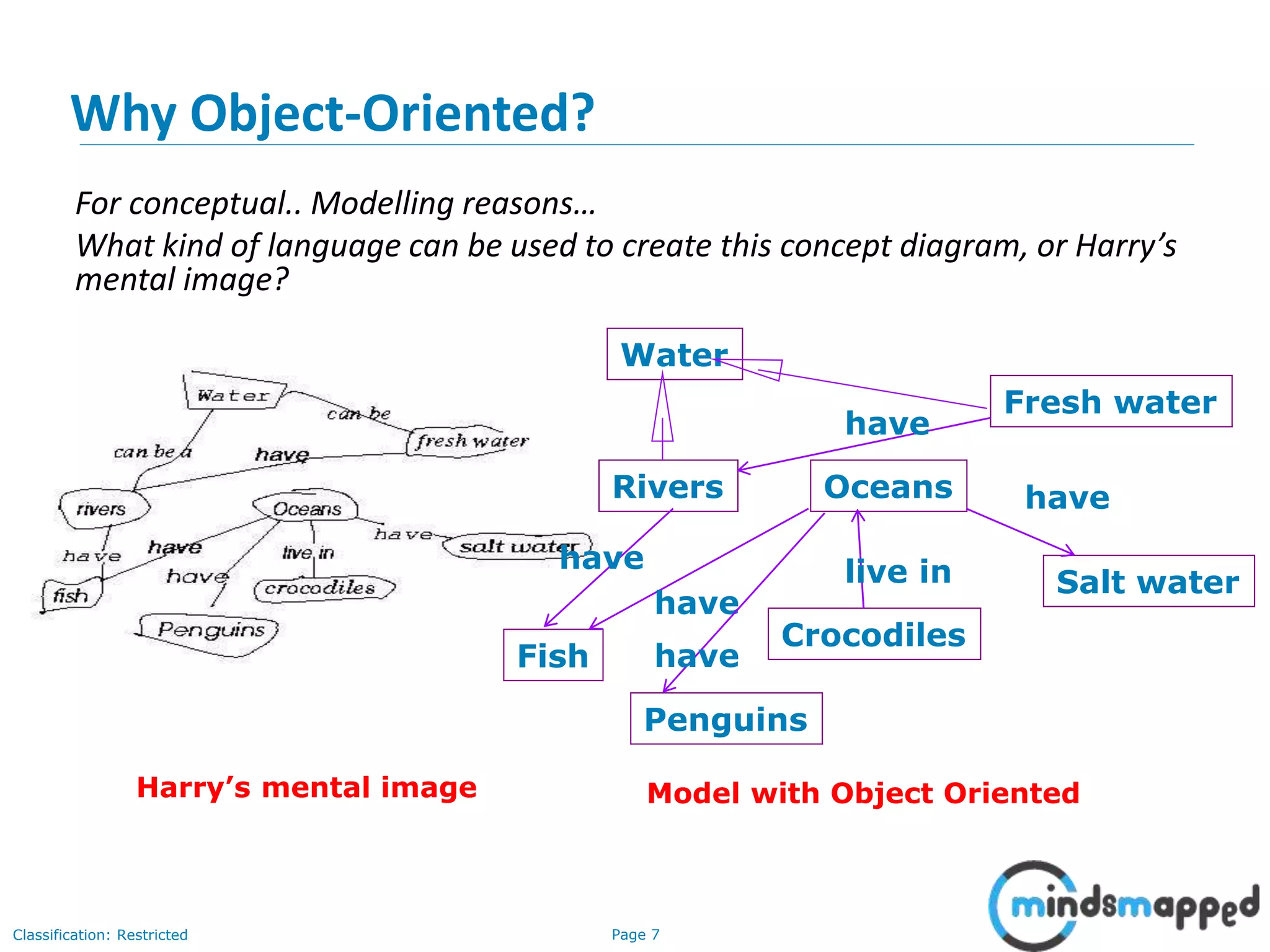
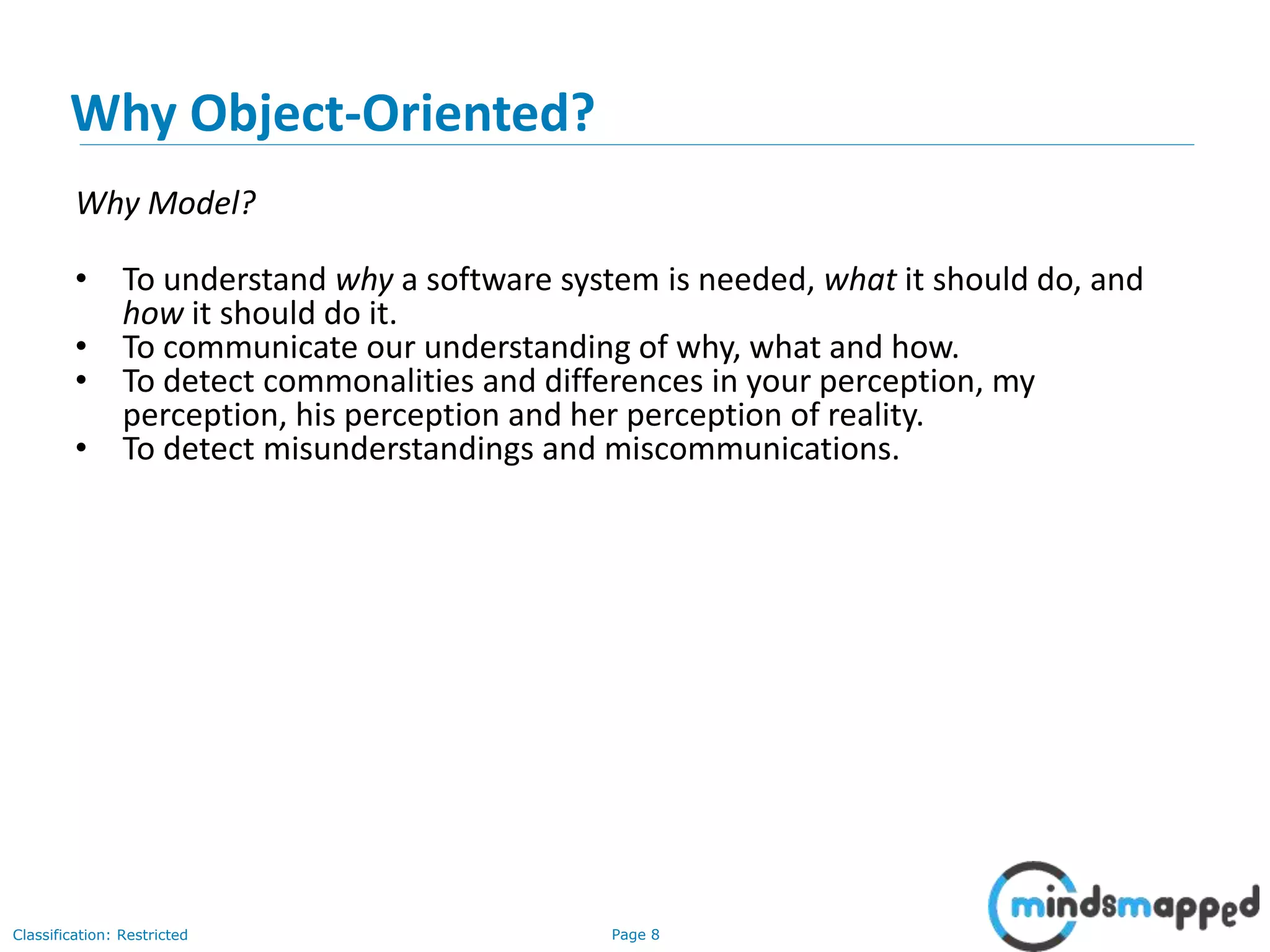
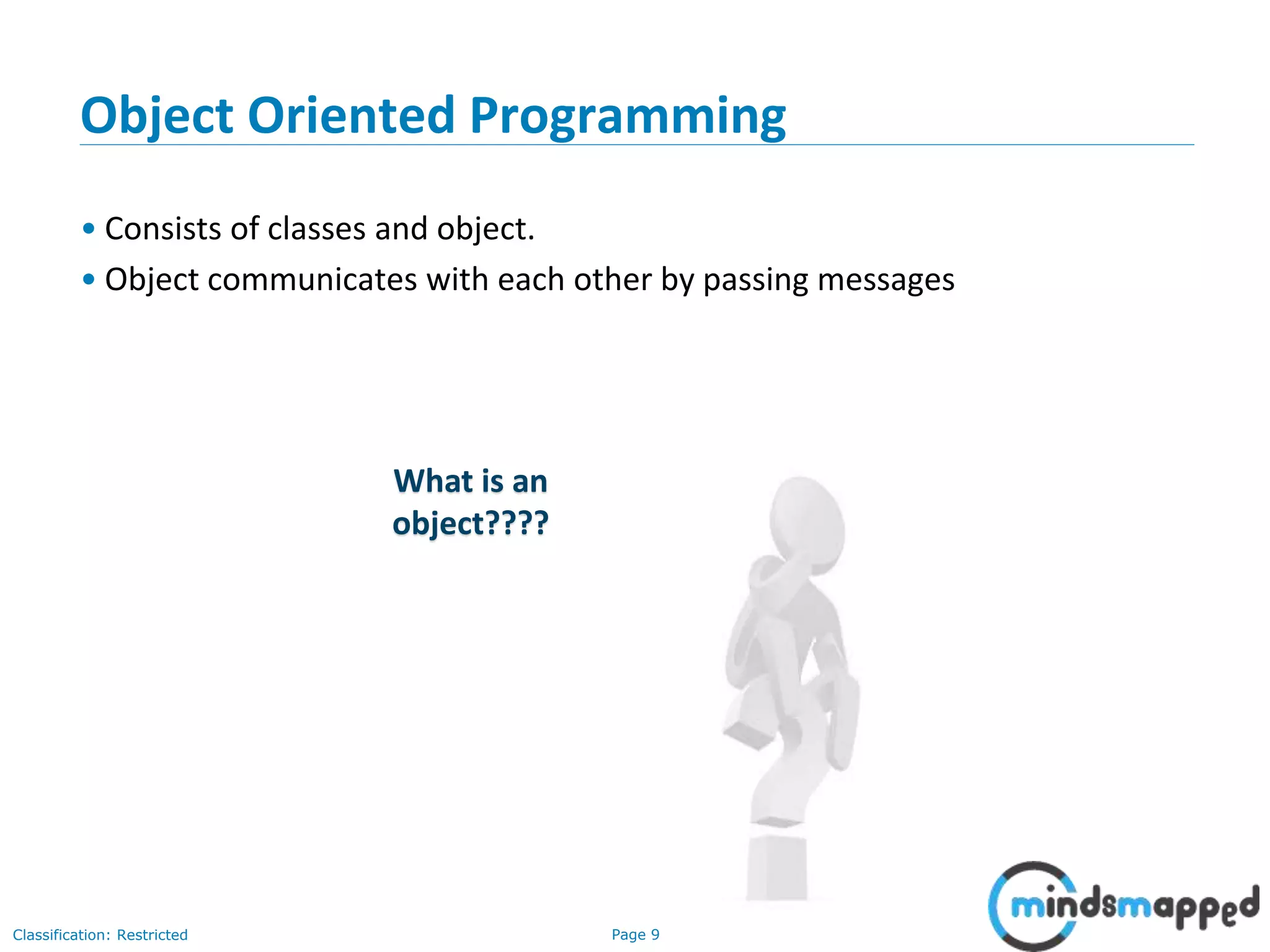
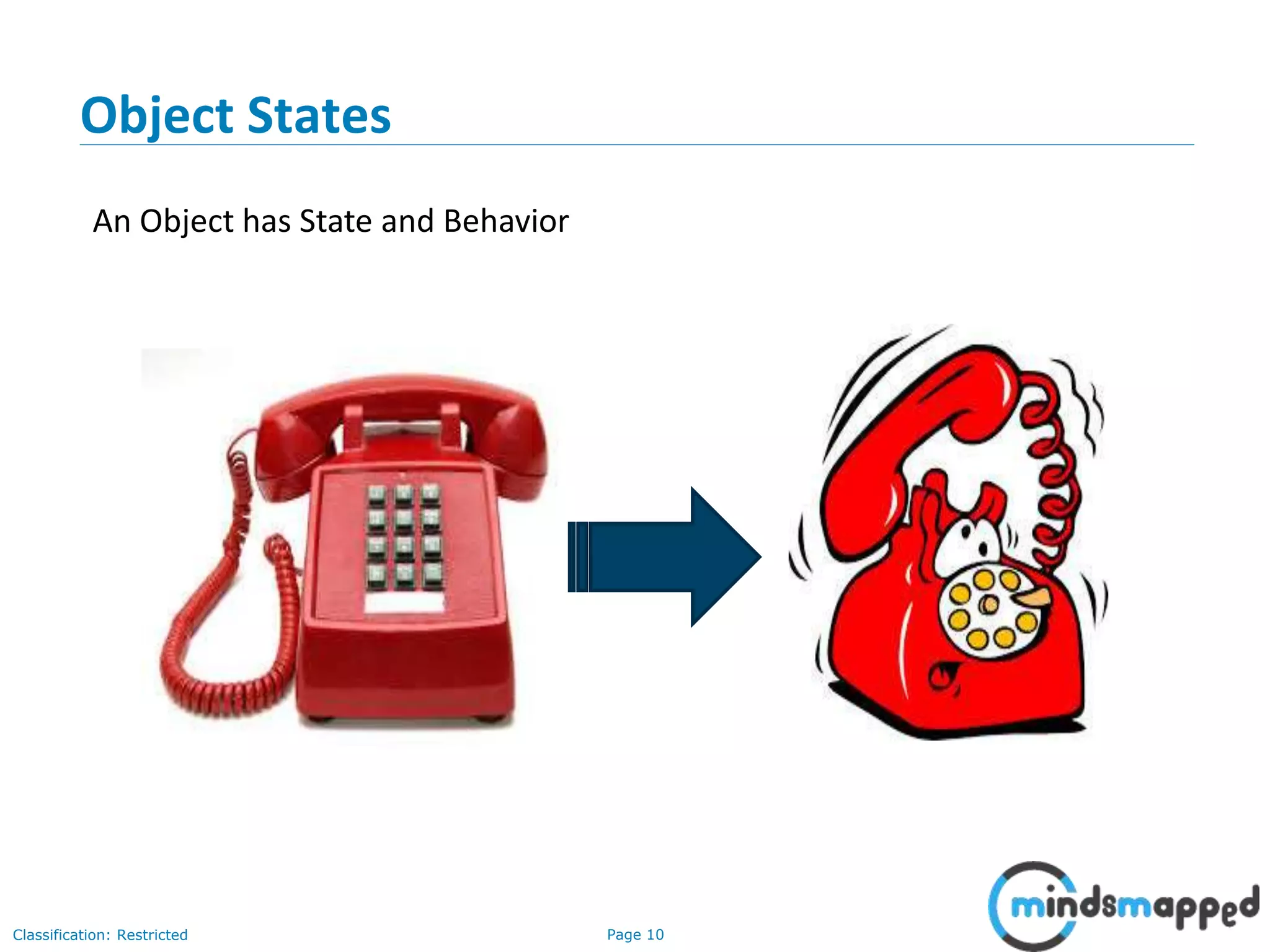
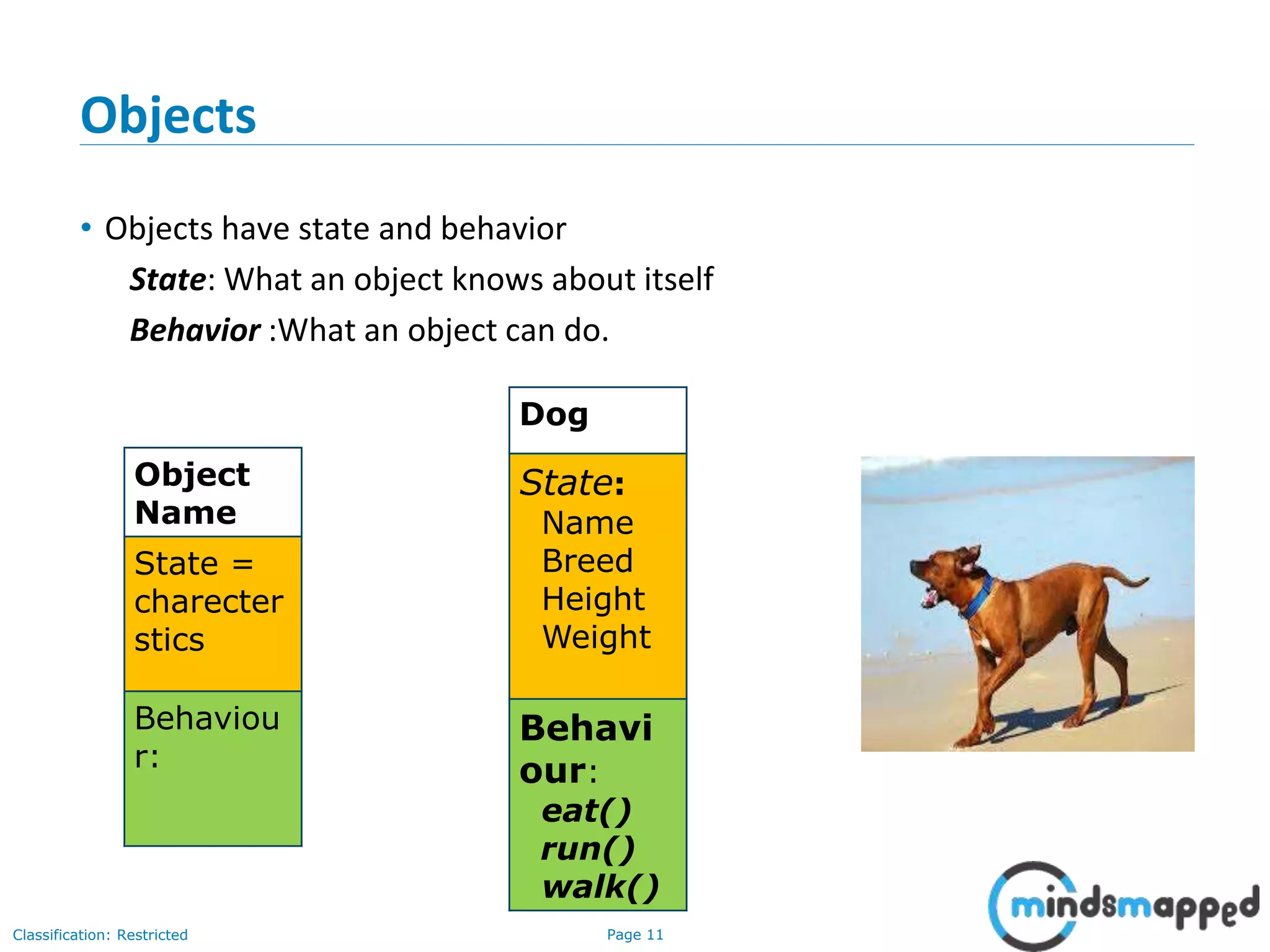
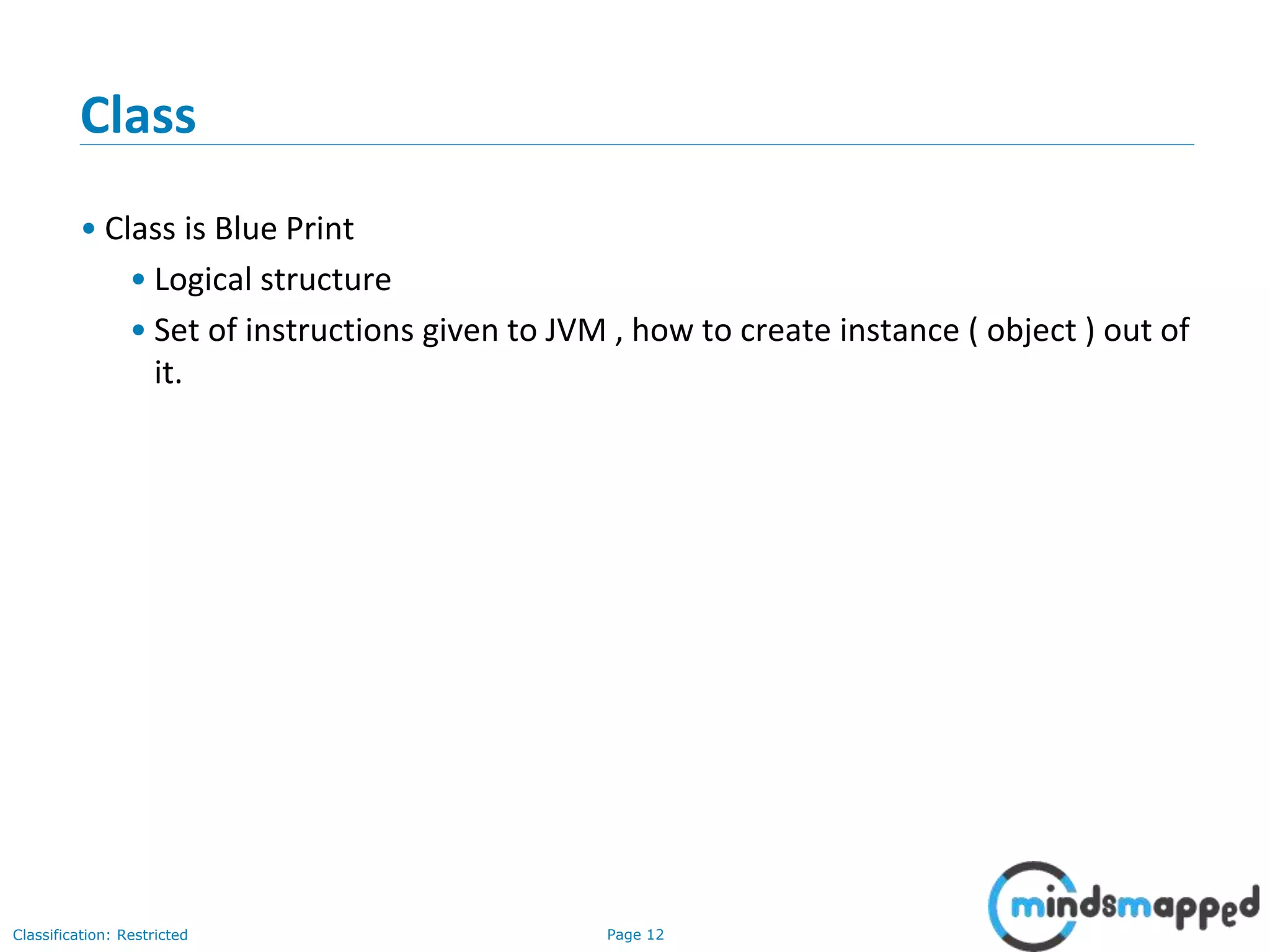
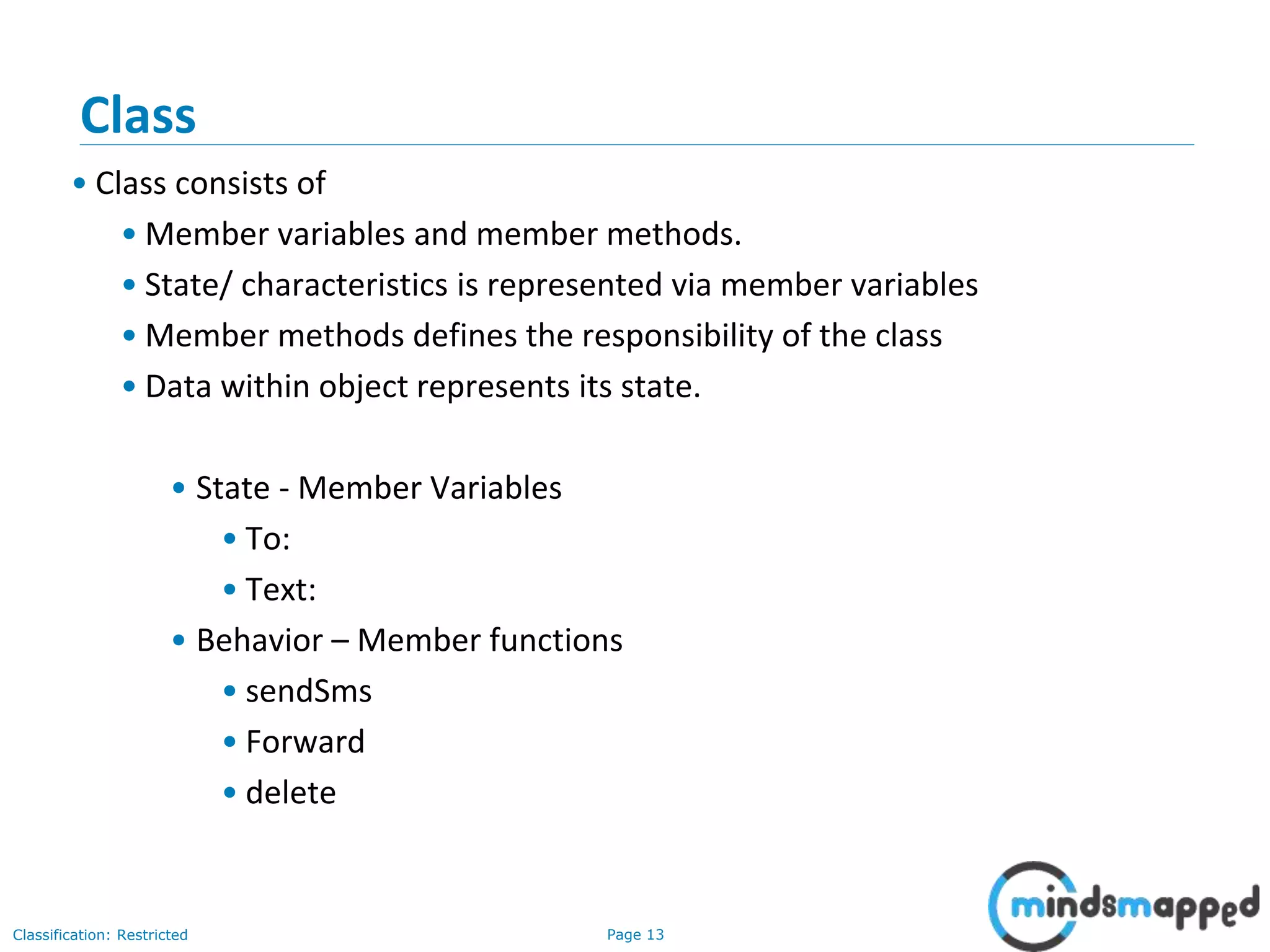
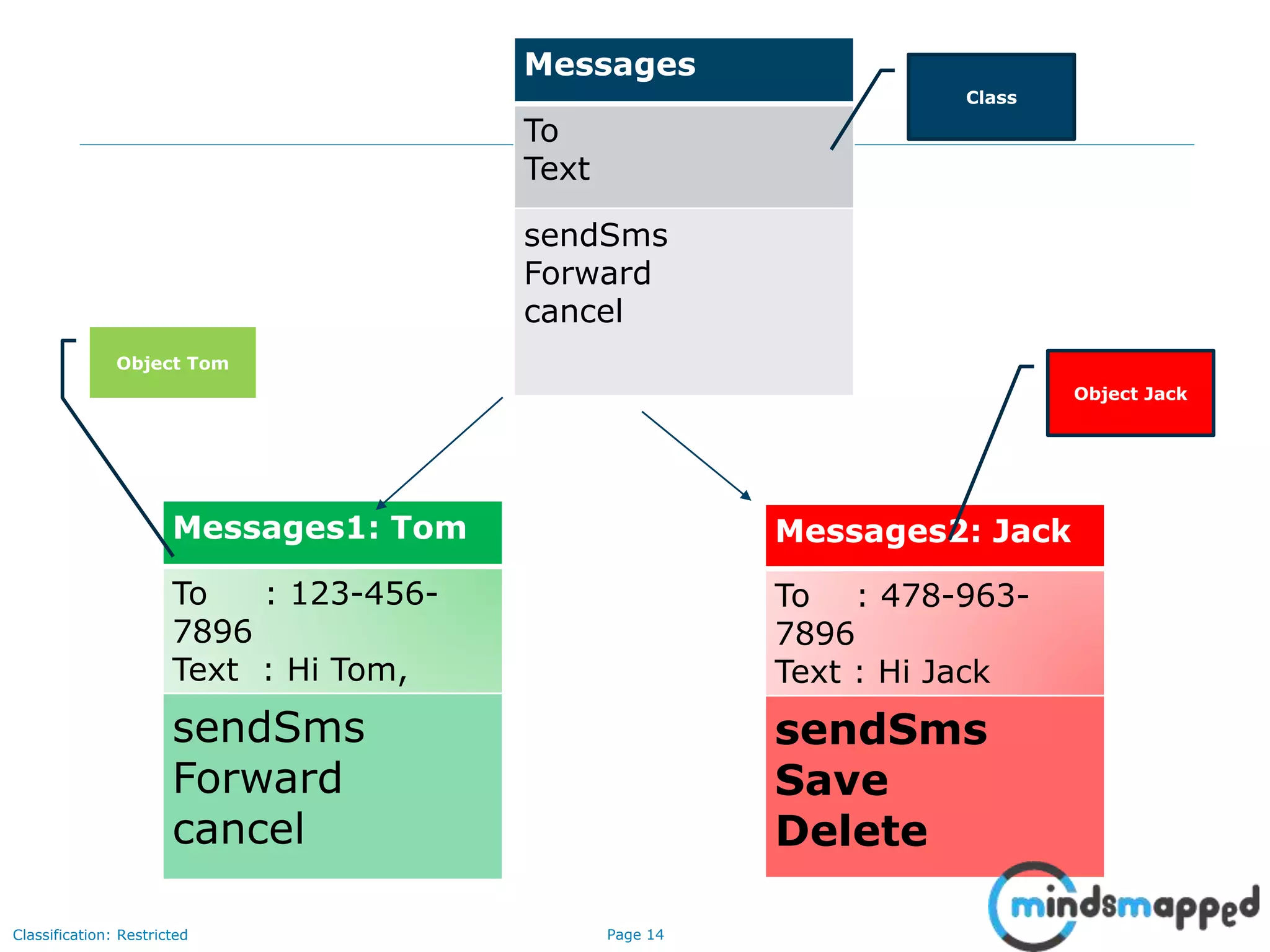
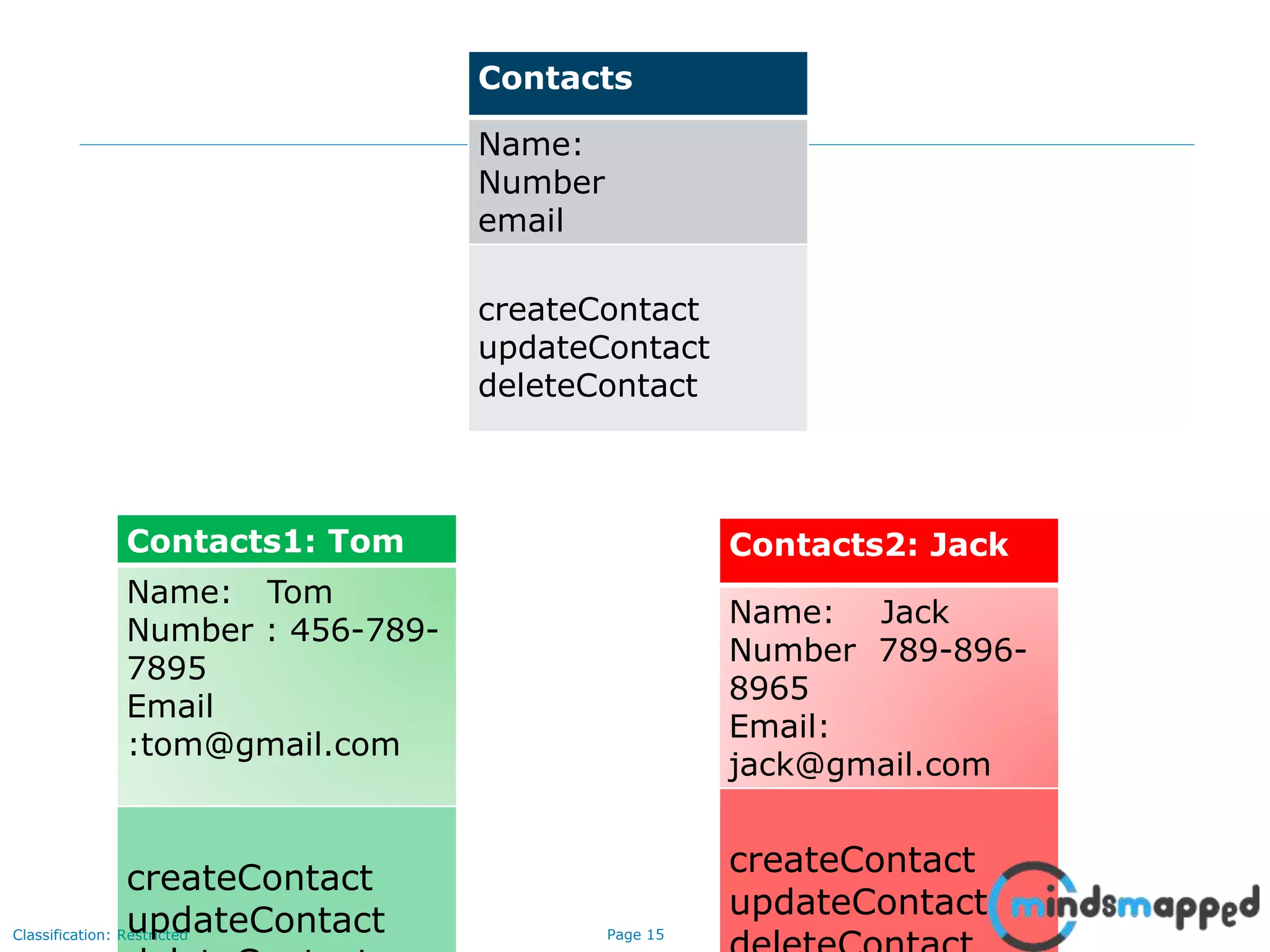
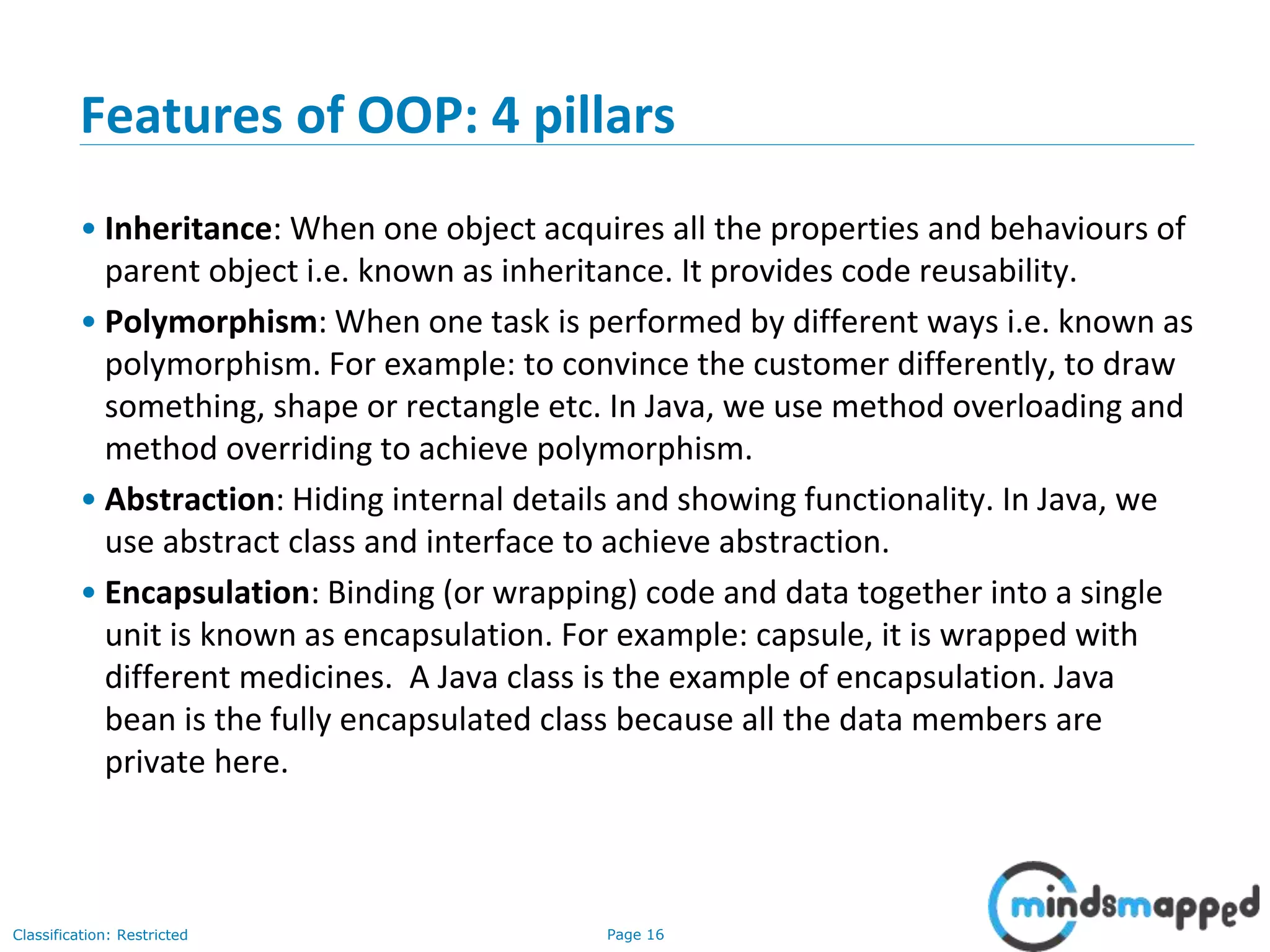
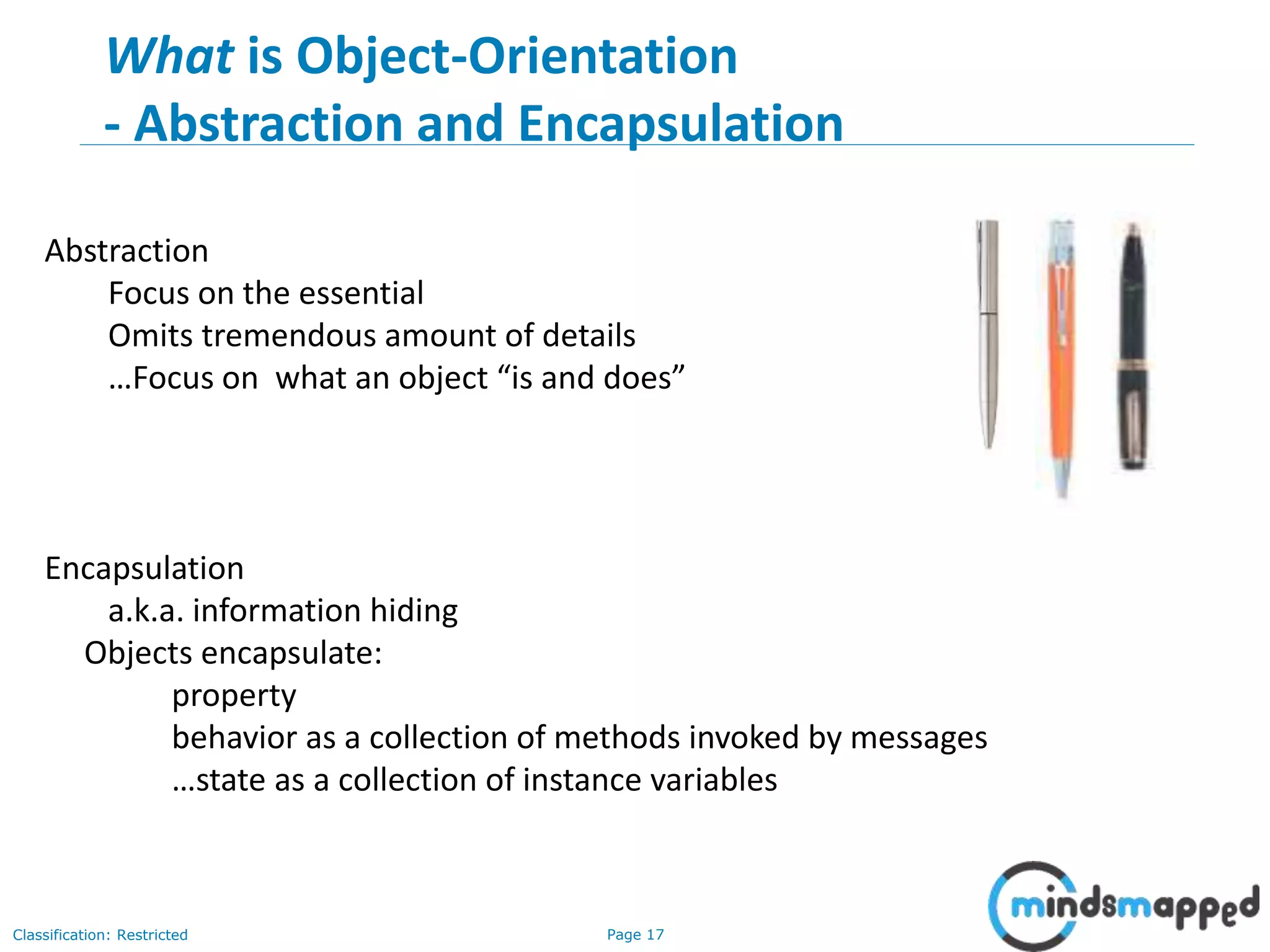
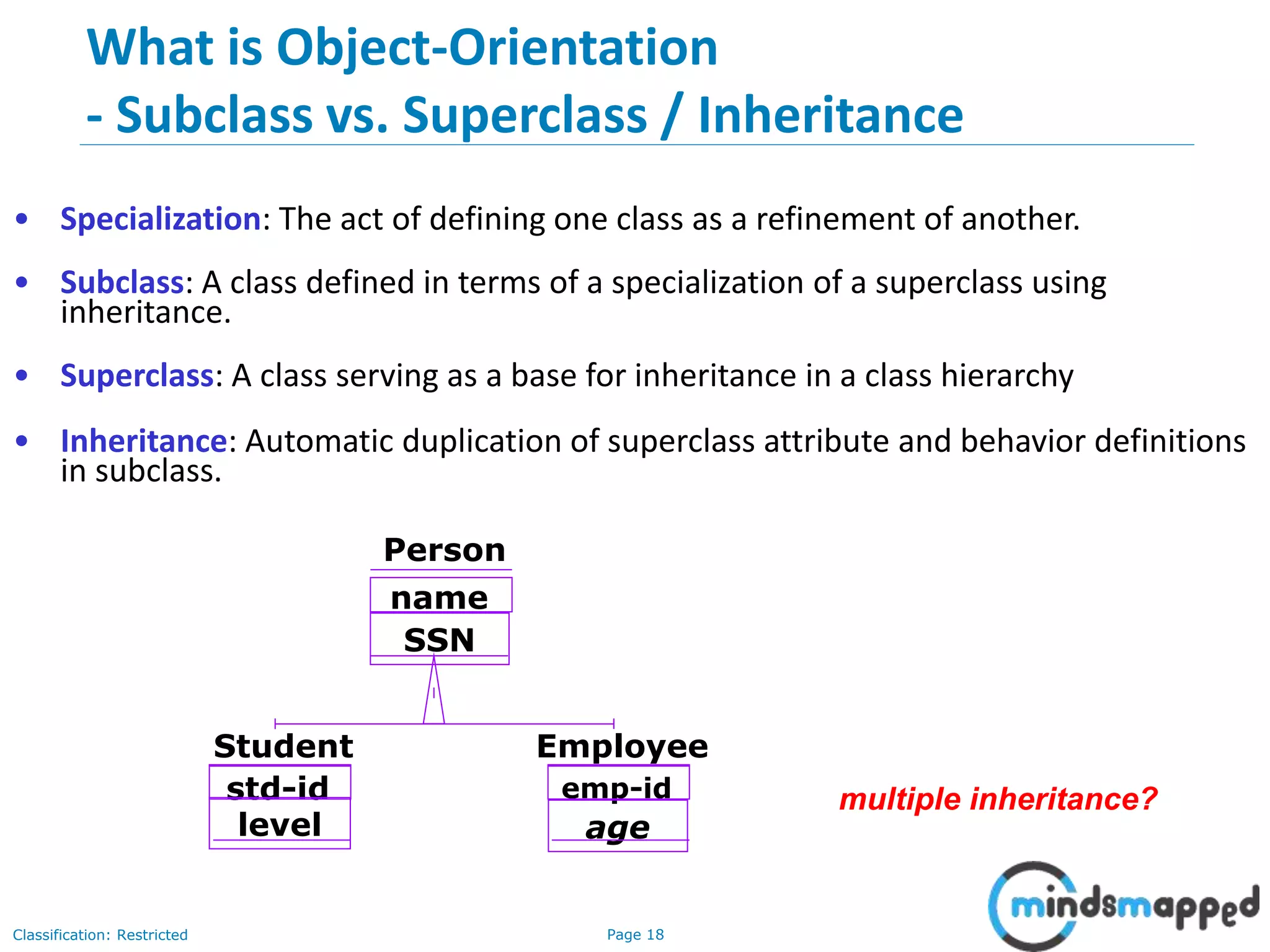
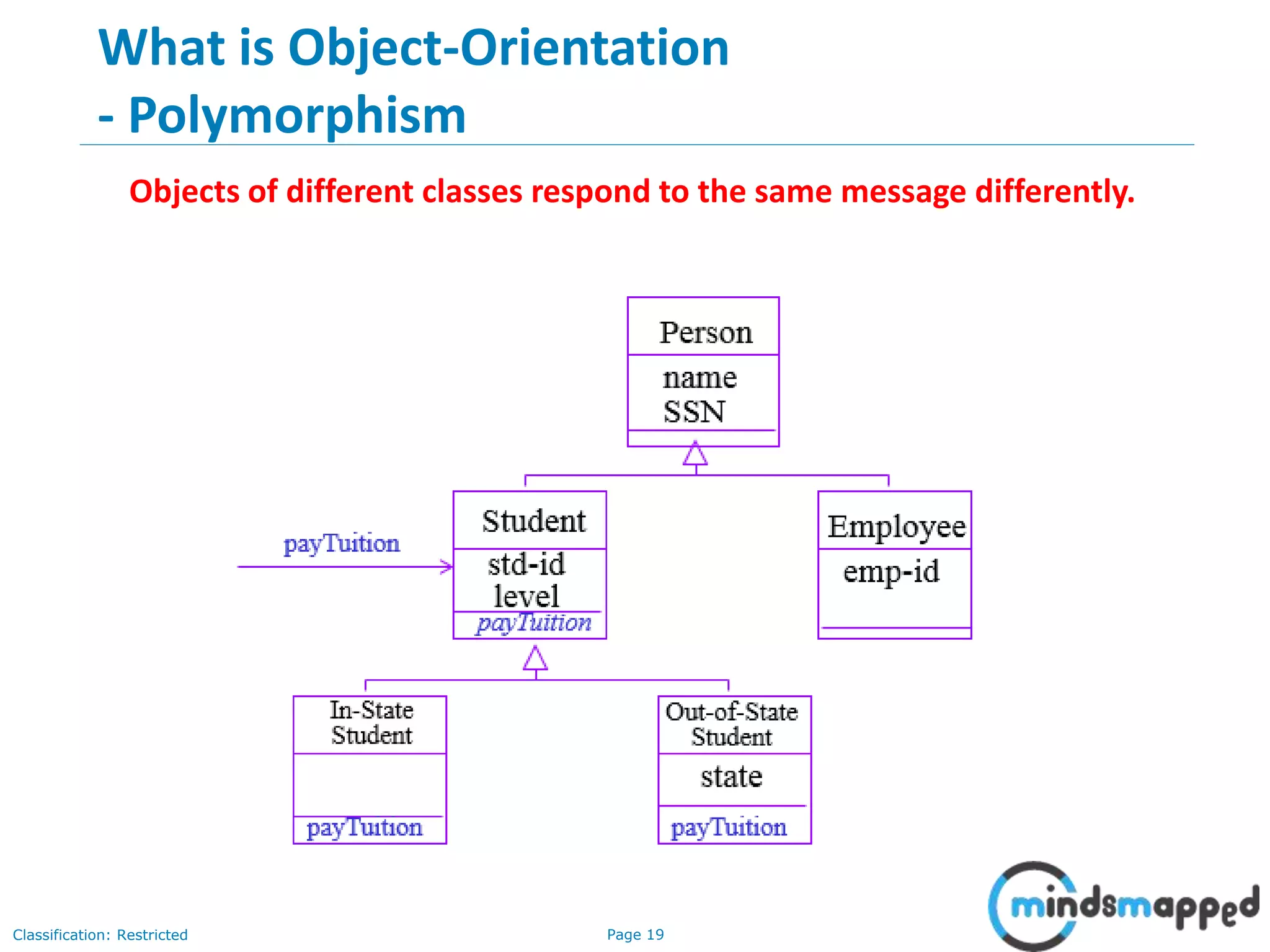
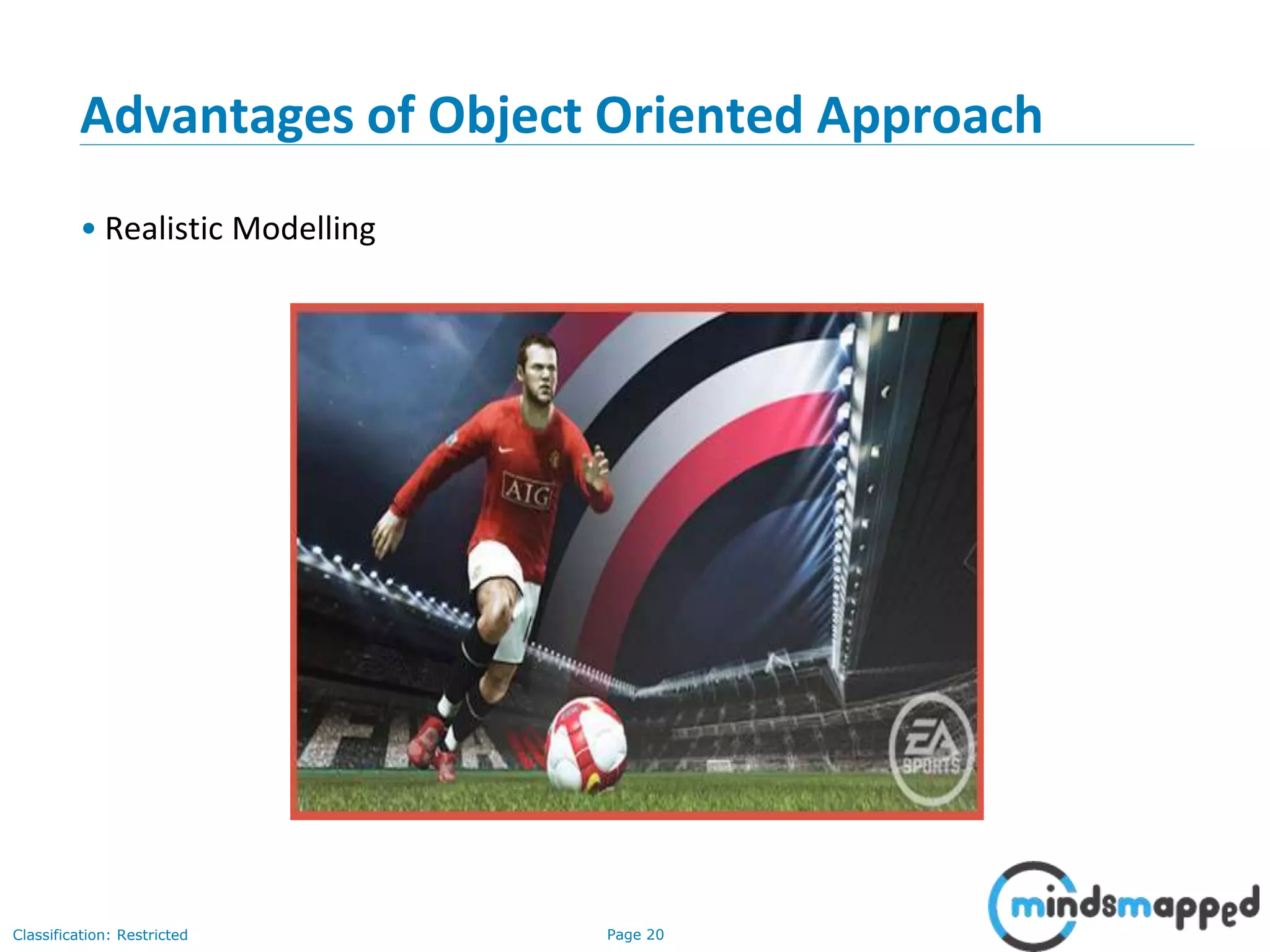
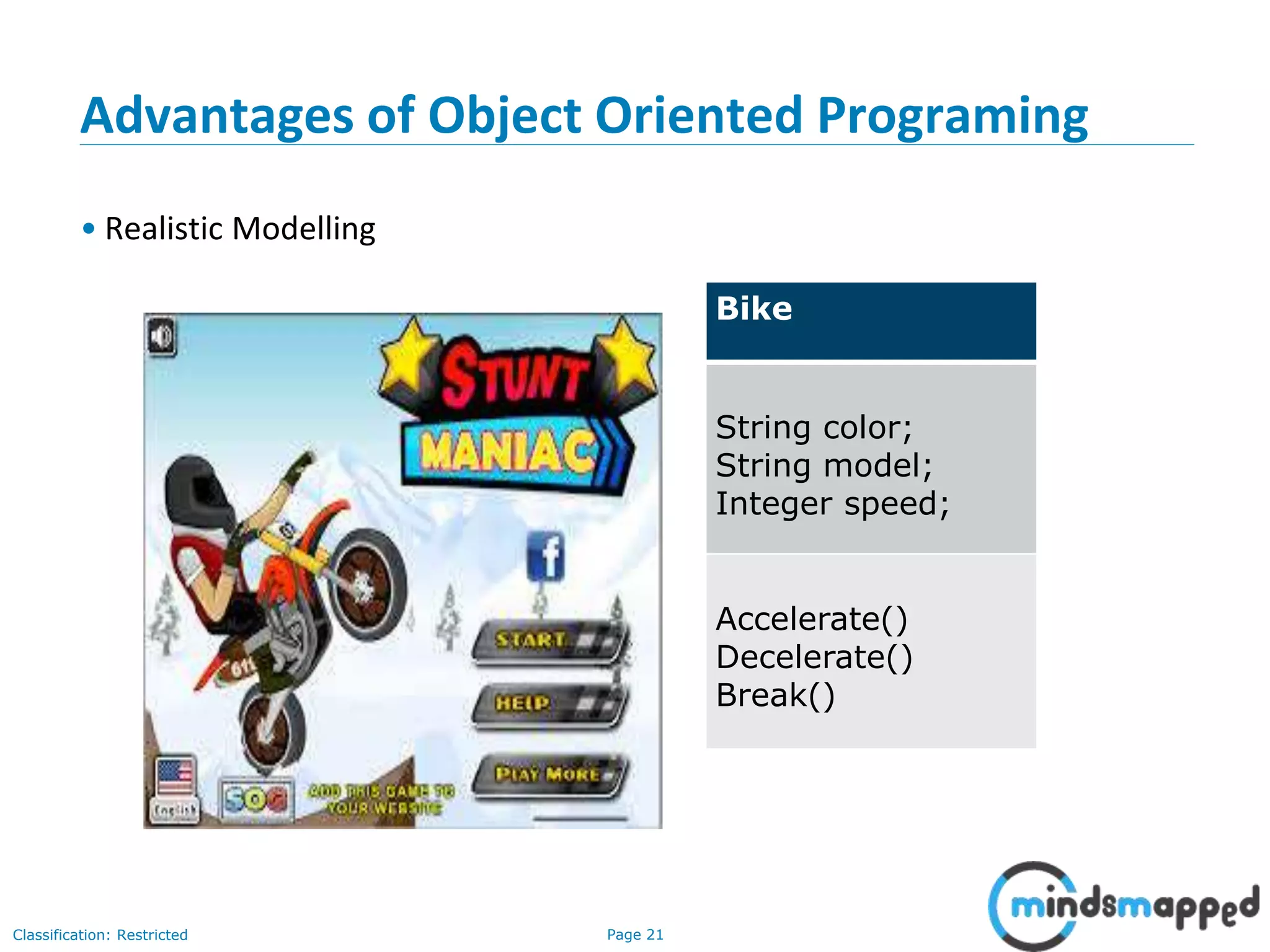
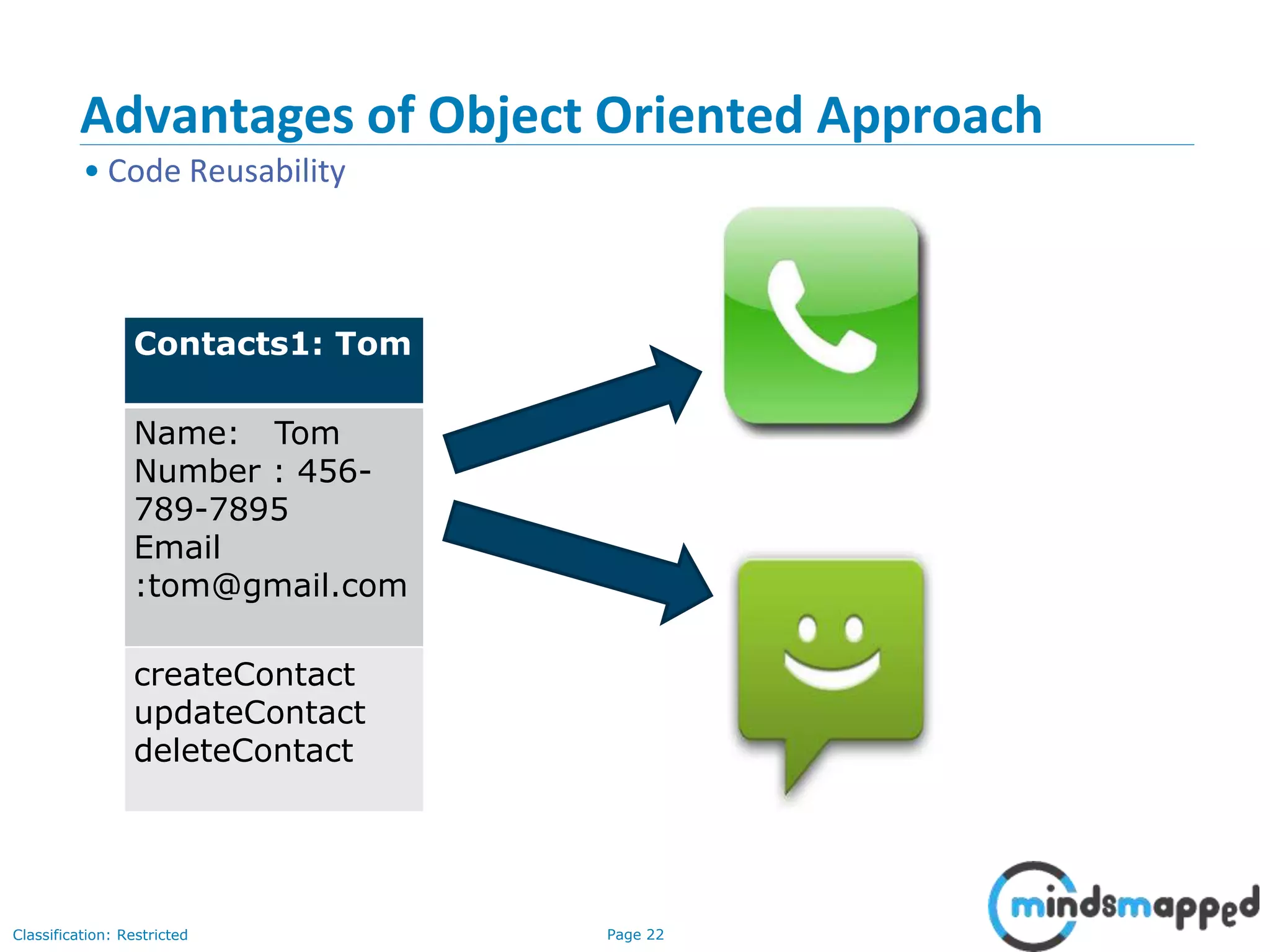
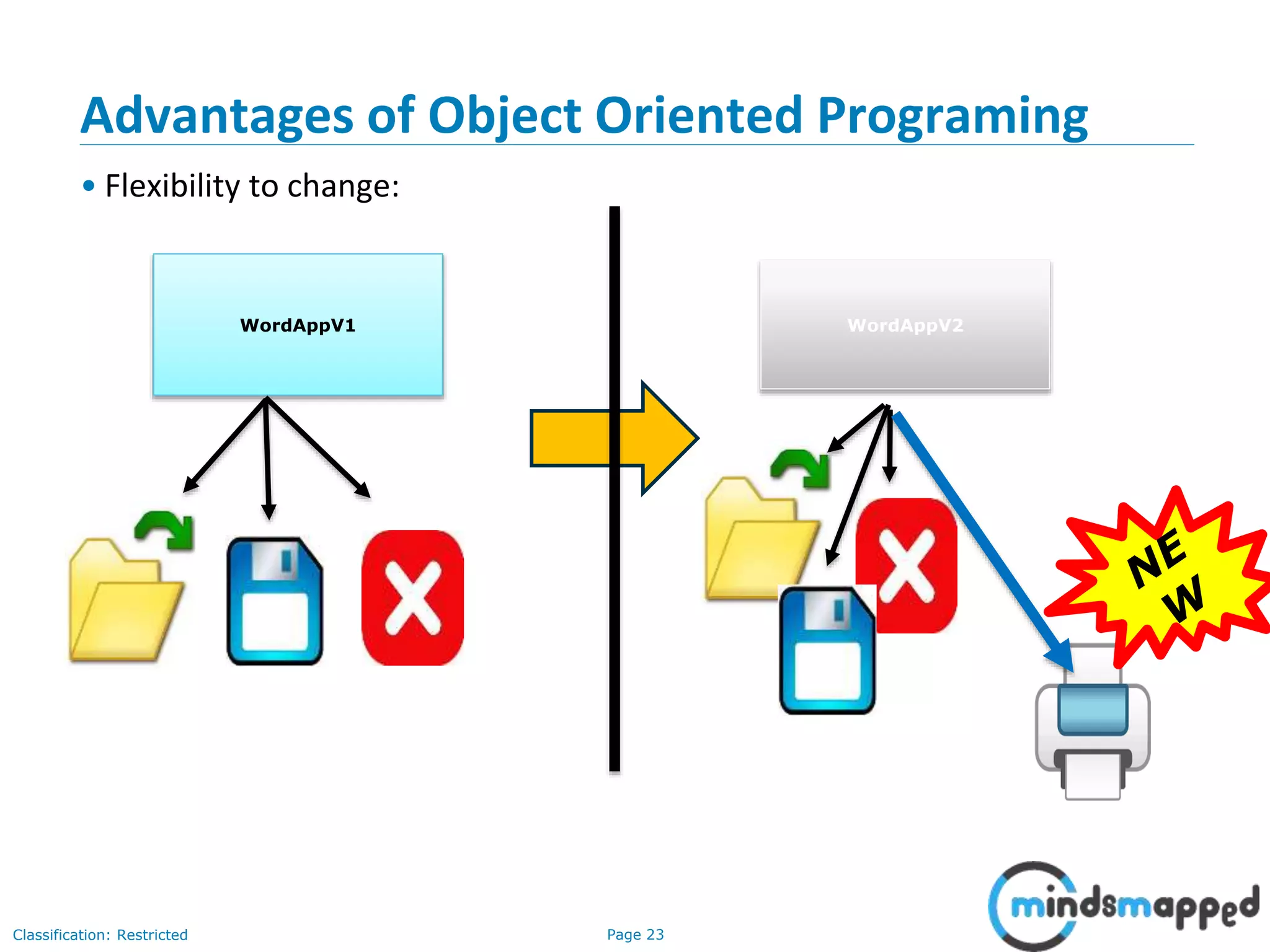
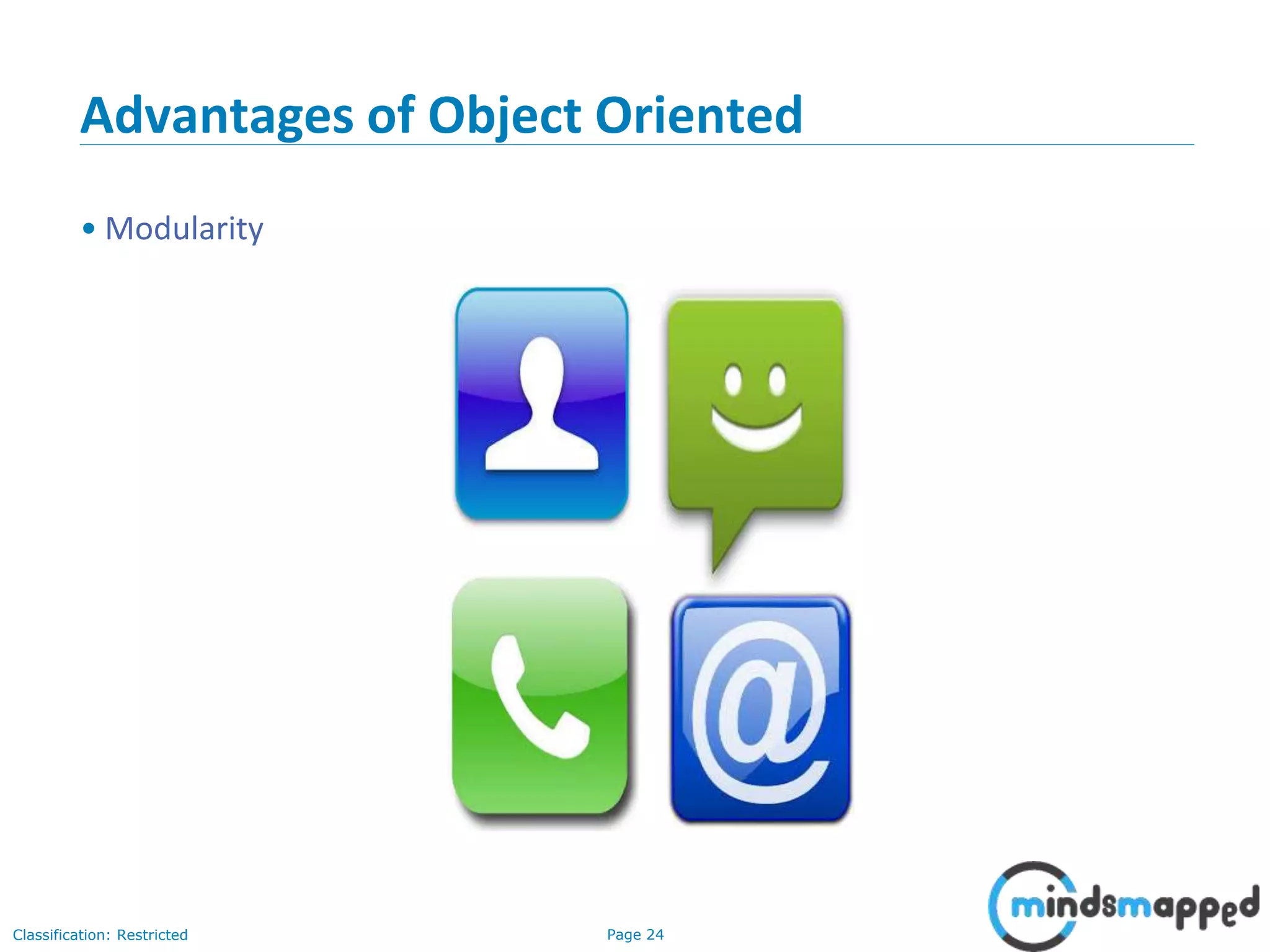
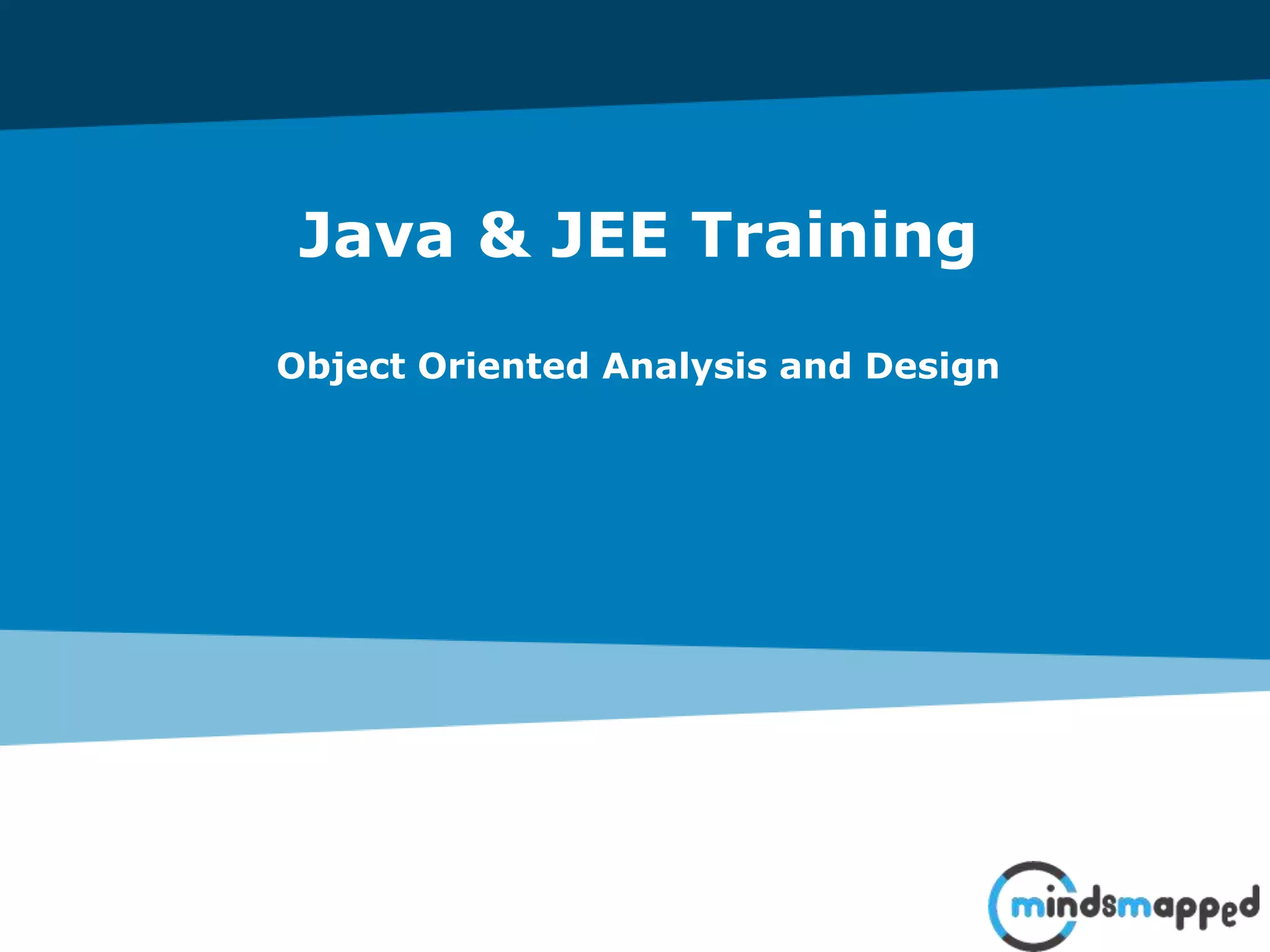
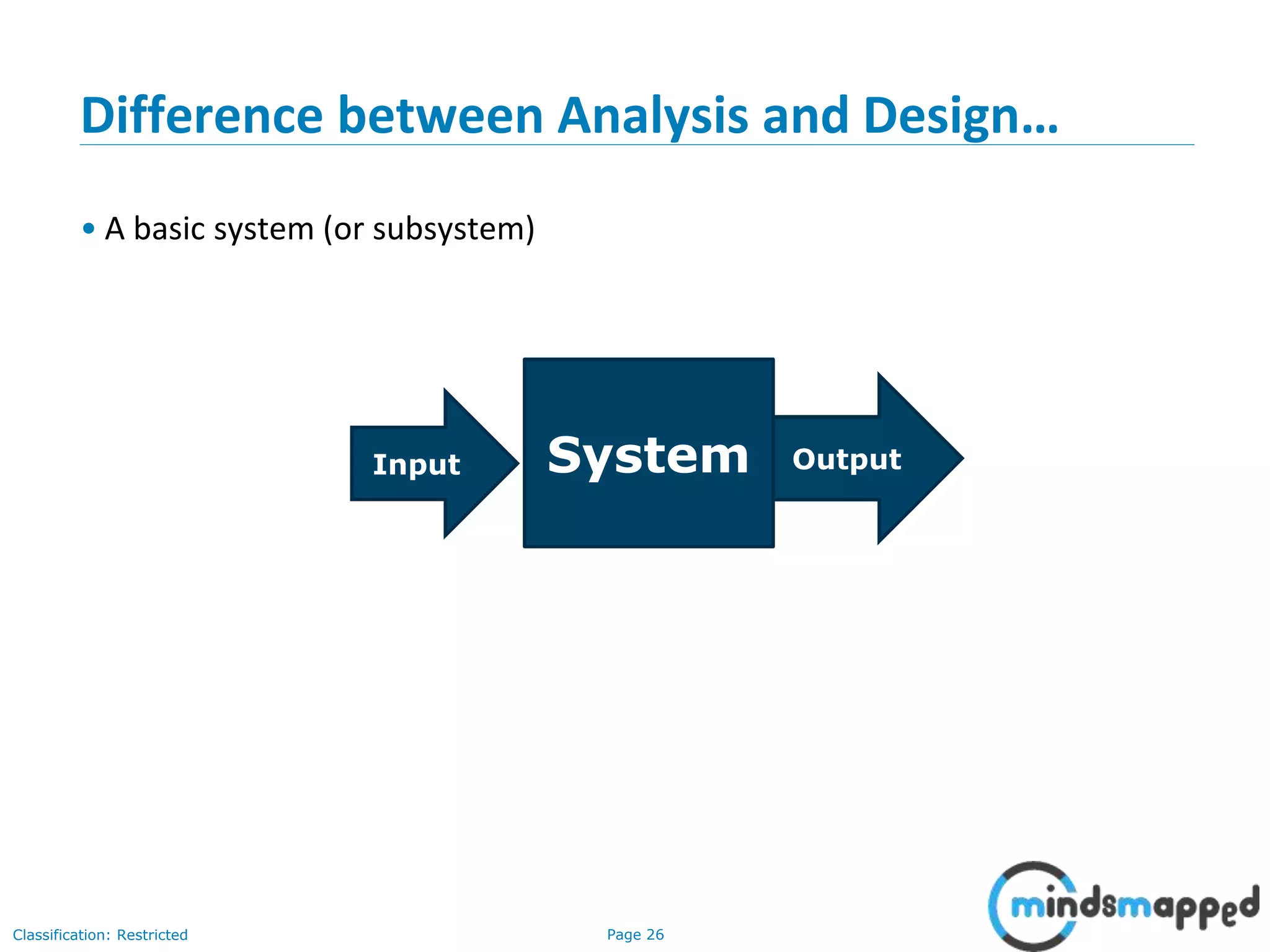
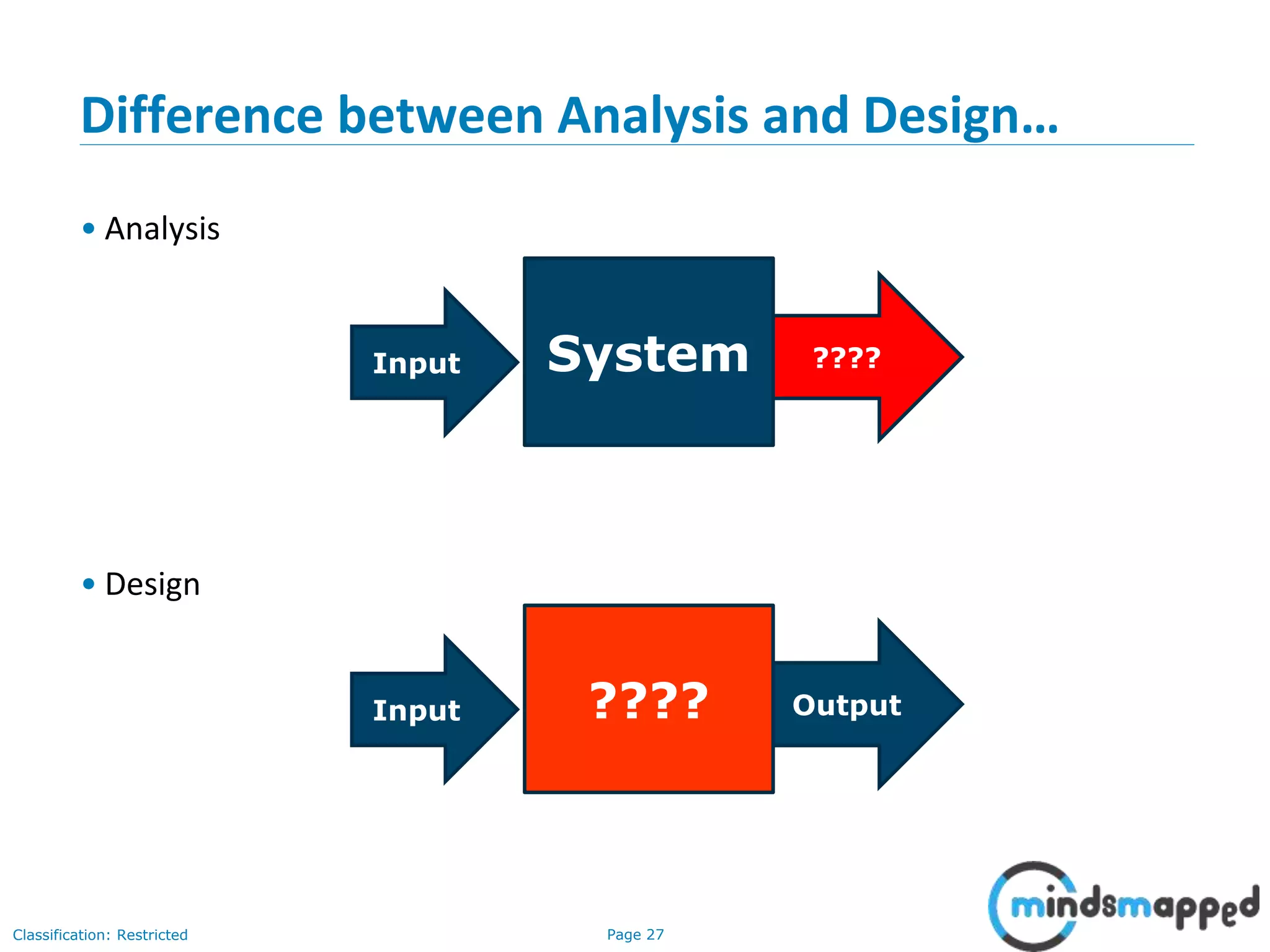
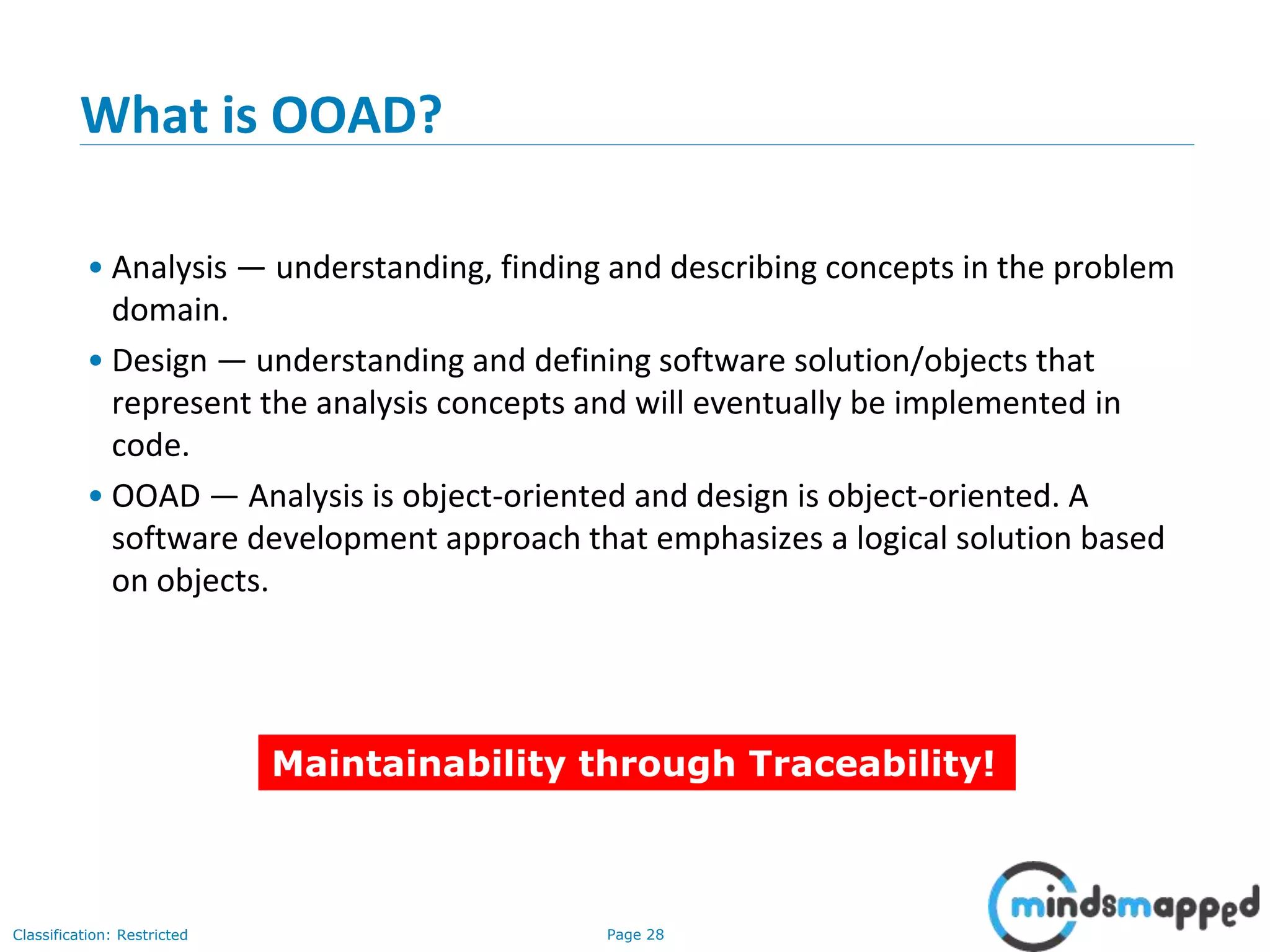
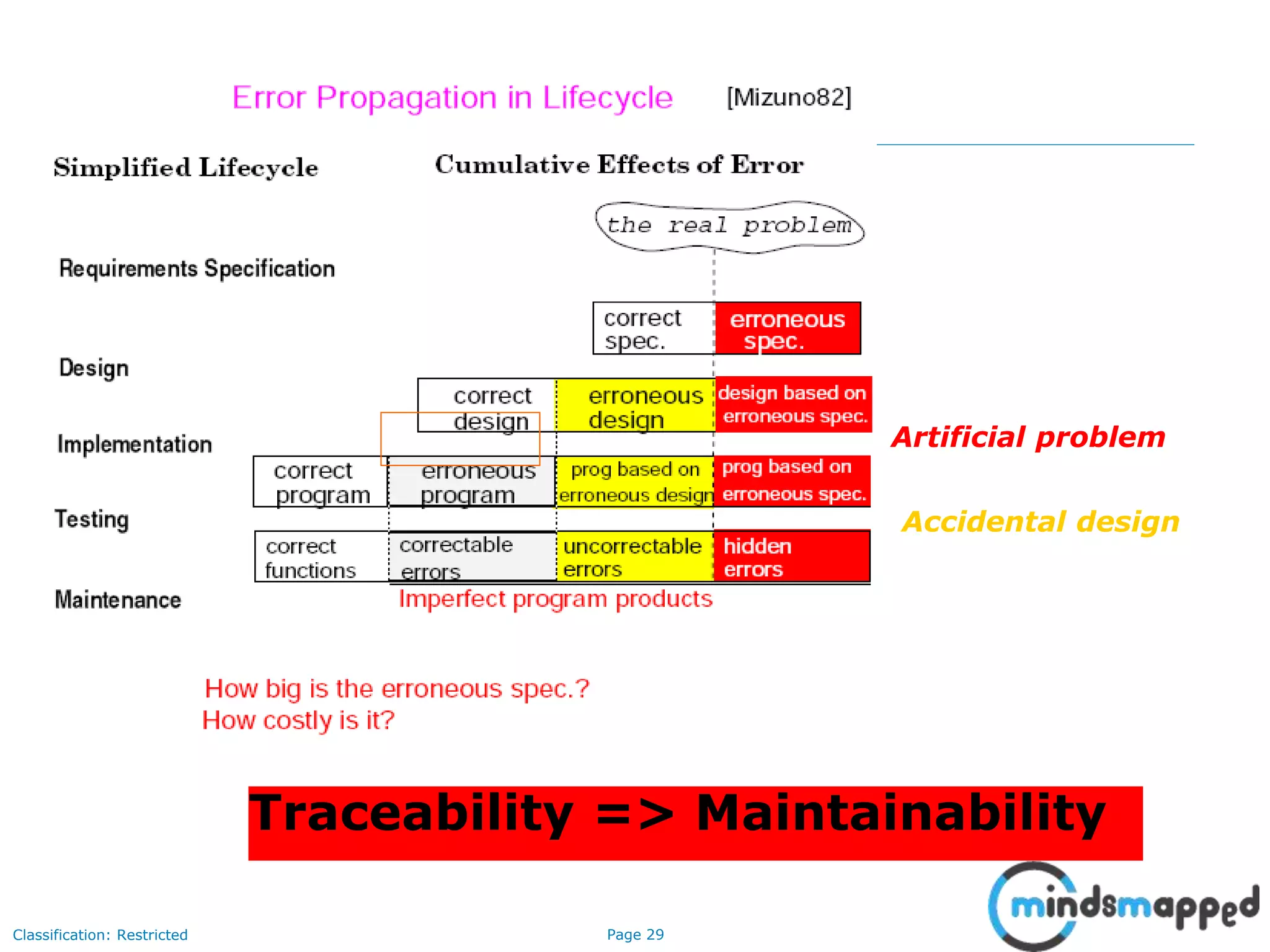
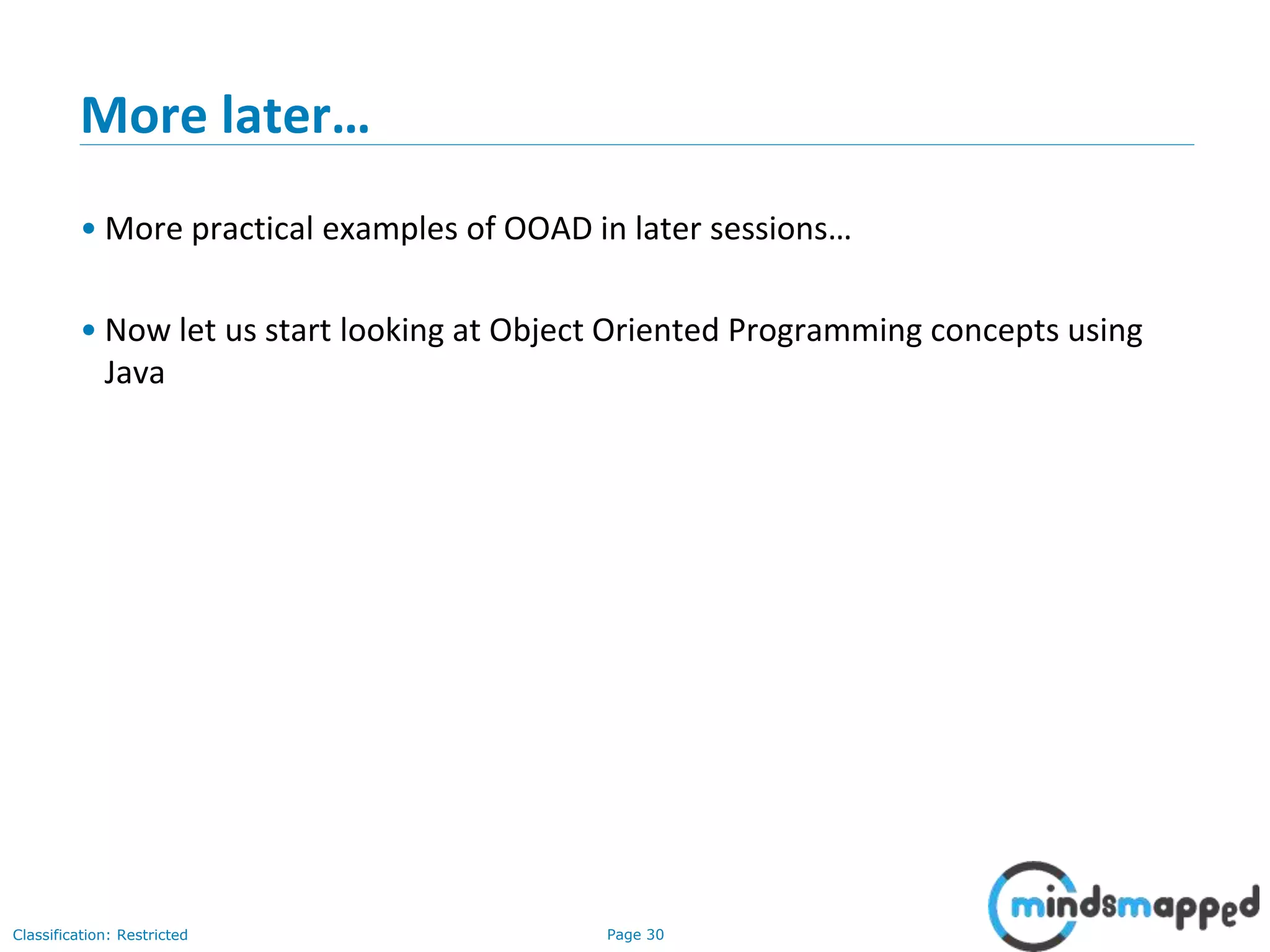
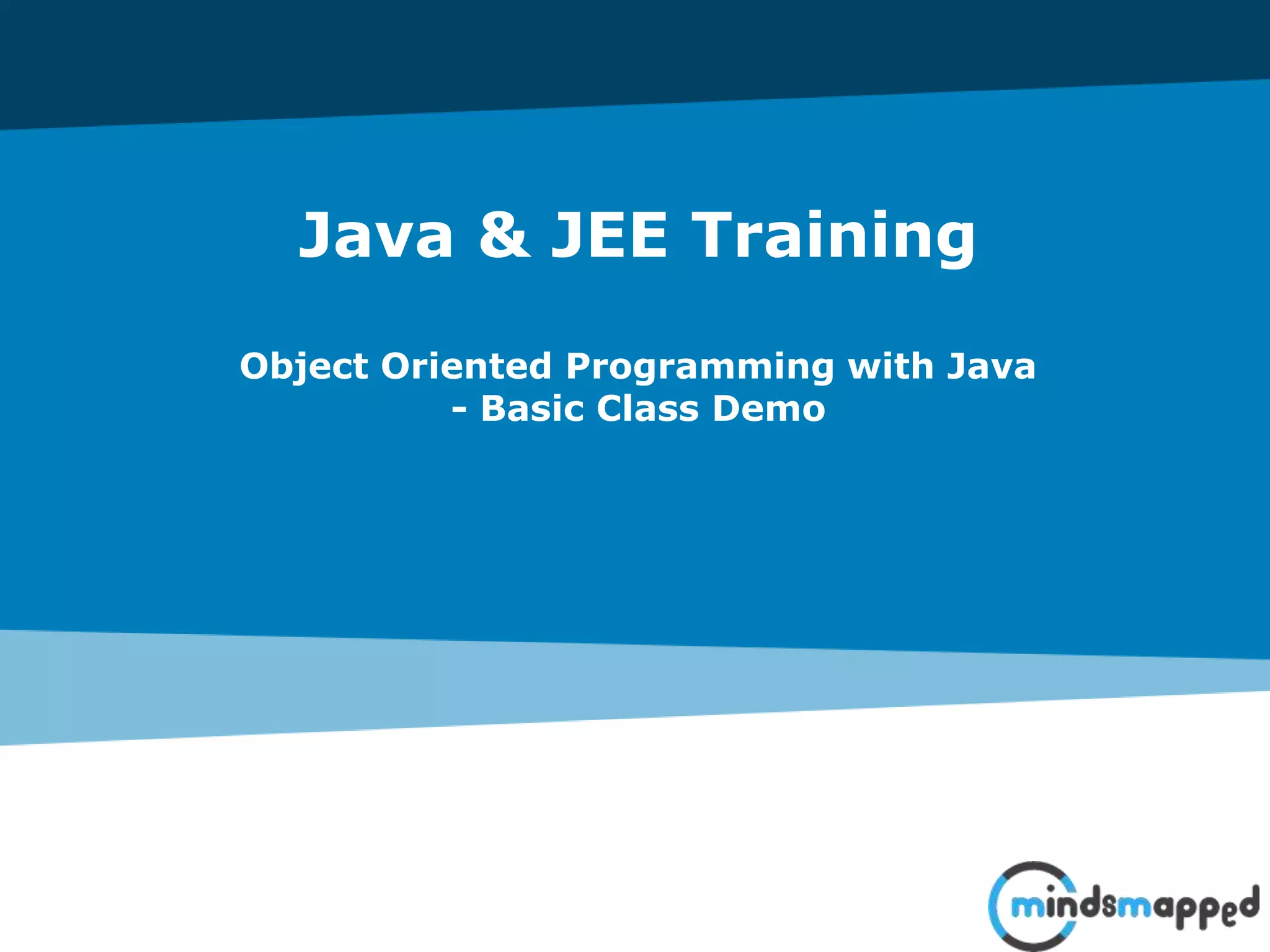
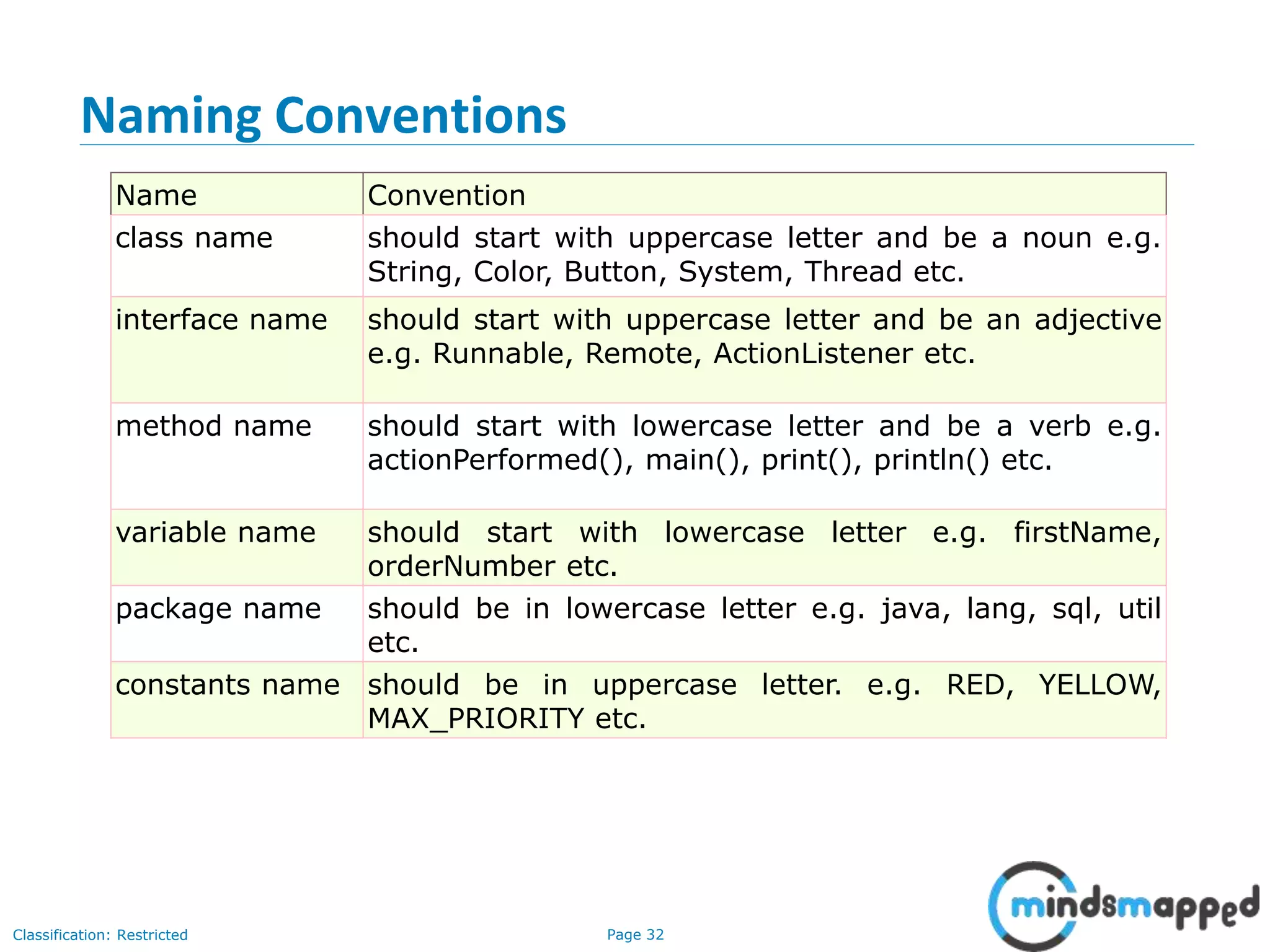
![Page 33Classification: Restricted Object and Class in Java - Demo A basic example of a class: class Student1{ int id;//data member (also instance variable) String name;//data member(also instance variable) public static void main(String args[]){ Student1 s1=new Student1();//creating an object of Student System.out.println(s1.id); System.out.println(s1.name); } }](https://image.slidesharecdn.com/session07-introtoobjectorientedprogrammingwithjava-slides-180817165427/75/Intro-to-Object-Oriented-Programming-with-Java-34-2048.jpg)
![Page 34Classification: Restricted Another Example of Objects and Classes in Java class Student2{ int rollno; String name; void insertRecord(int r, String n){ //method rollno=r; name=n; } void displayInformation(){System.out.println(rollno+" "+name);}//method public static void main(String args[]){ Student2 s1=new Student2(); Student2 s2=new Student2(); s1.insertRecord(111,"Karan"); s2.insertRecord(222,"Aryan"); s1.displayInformation(); s2.displayInformation(); } }](https://image.slidesharecdn.com/session07-introtoobjectorientedprogrammingwithjava-slides-180817165427/75/Intro-to-Object-Oriented-Programming-with-Java-35-2048.jpg)
